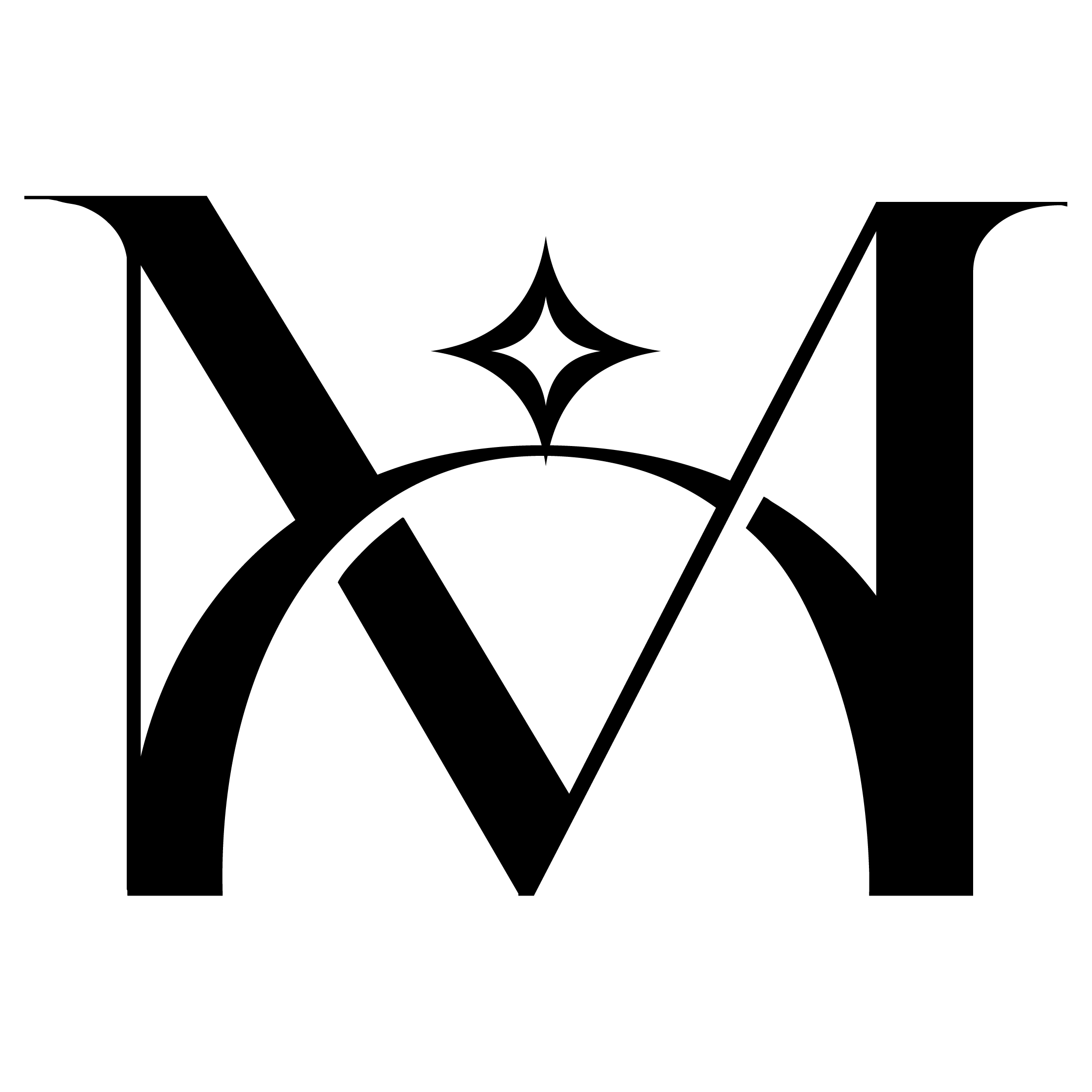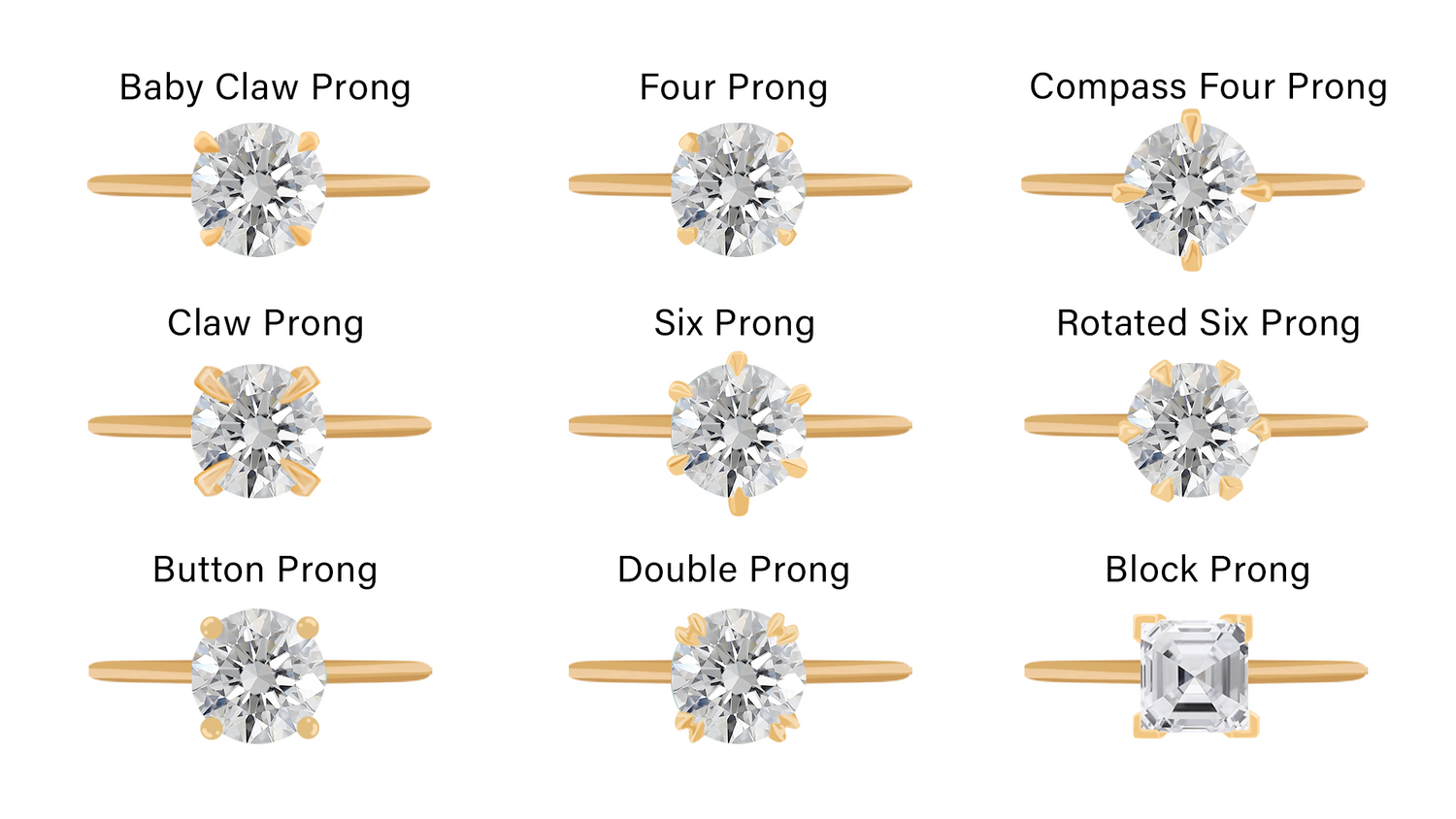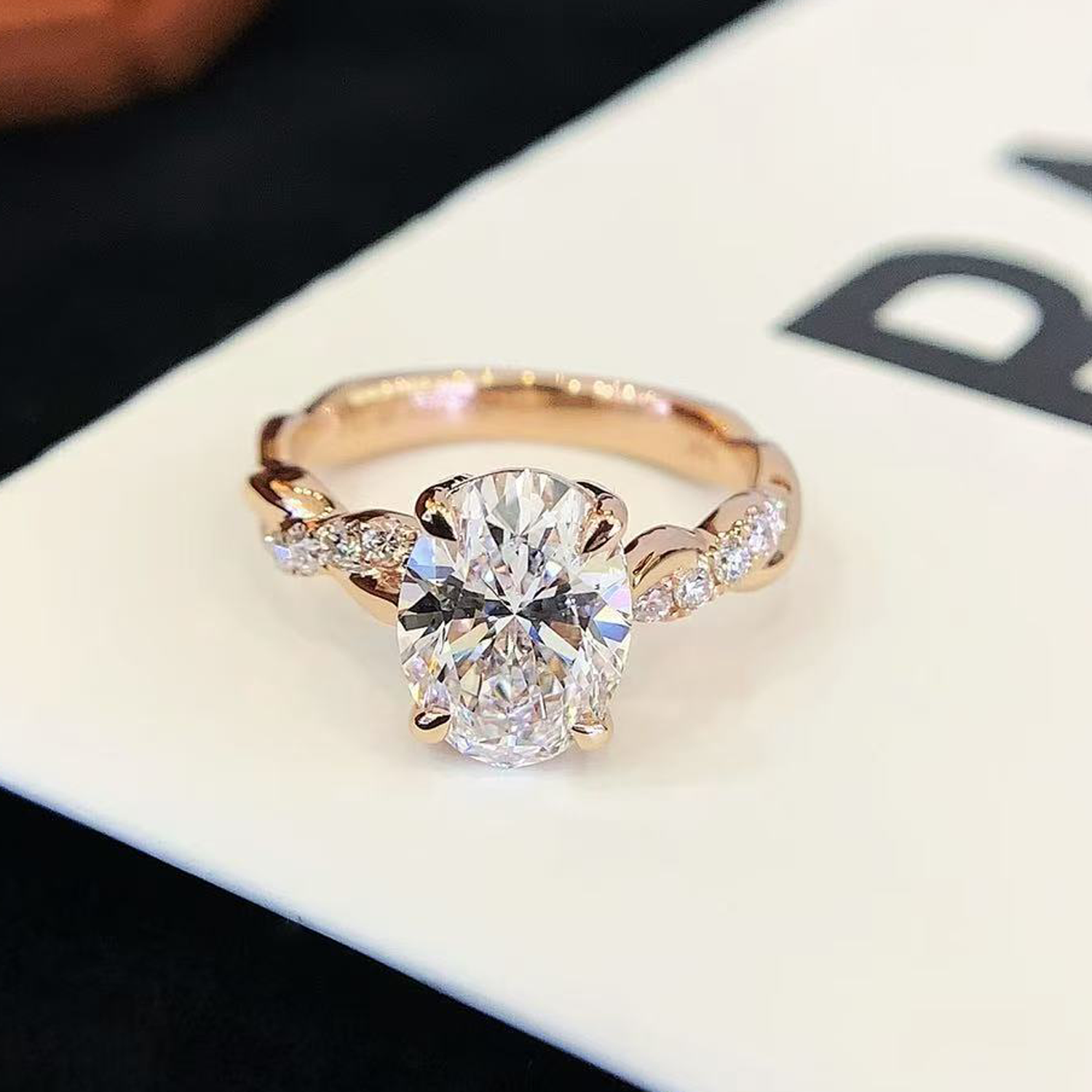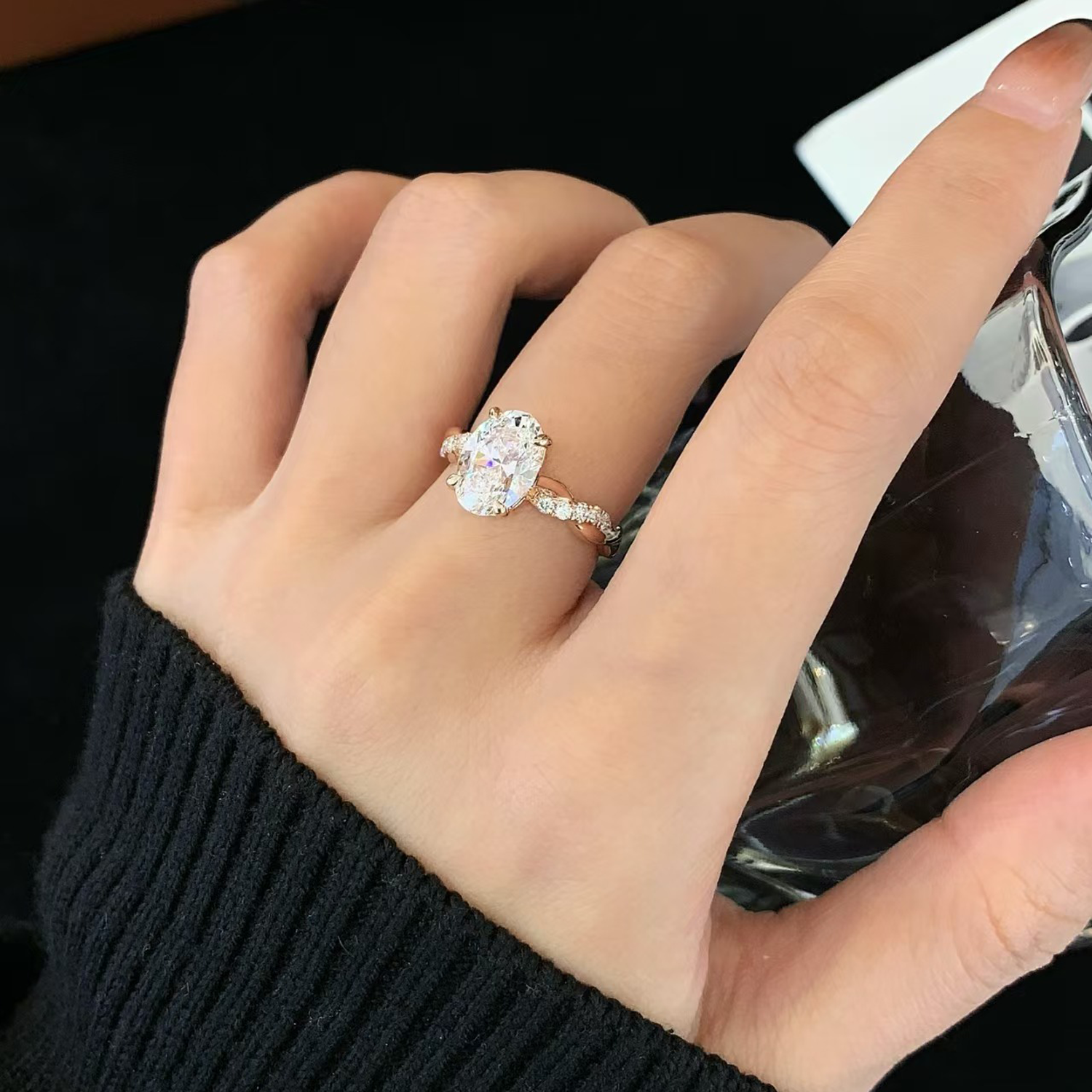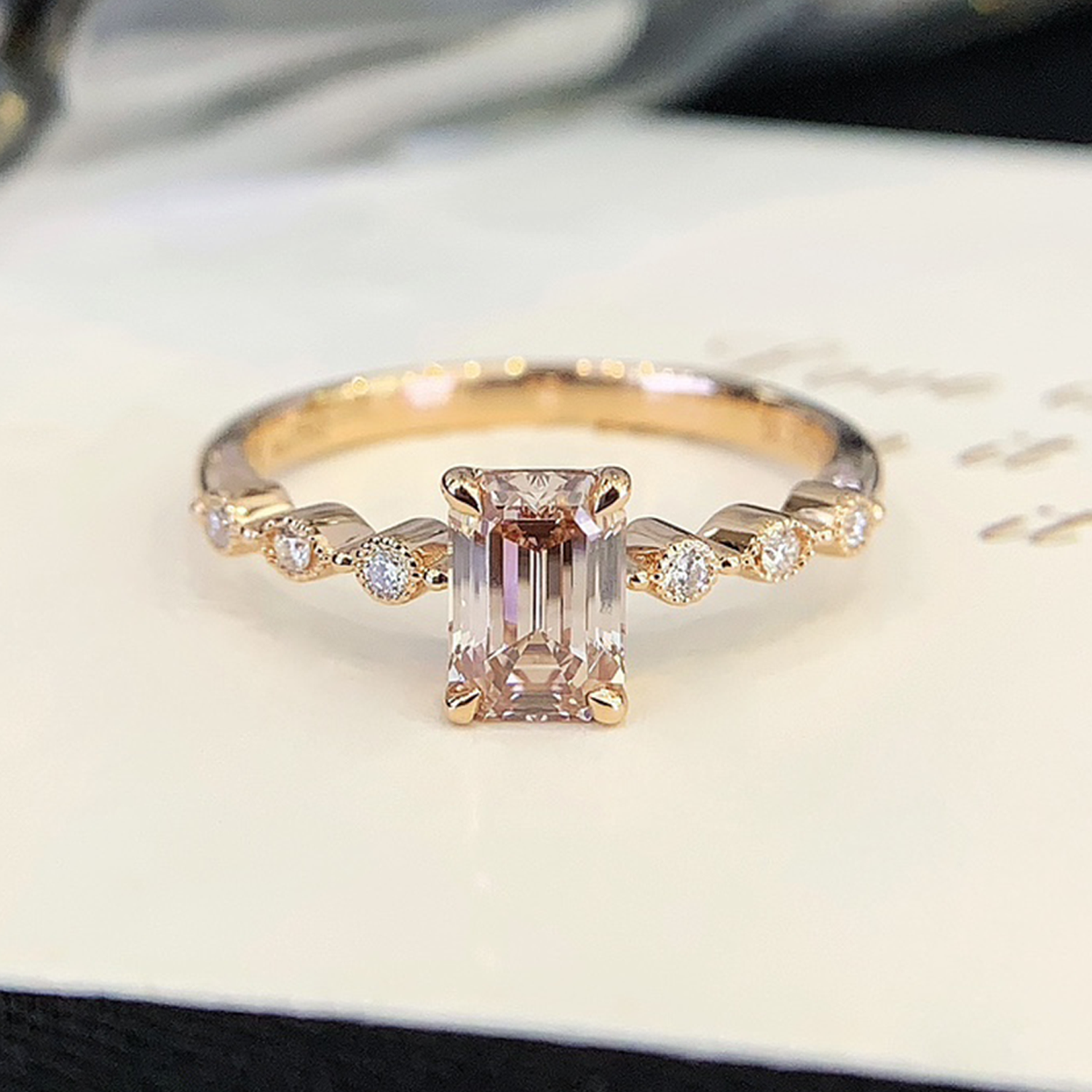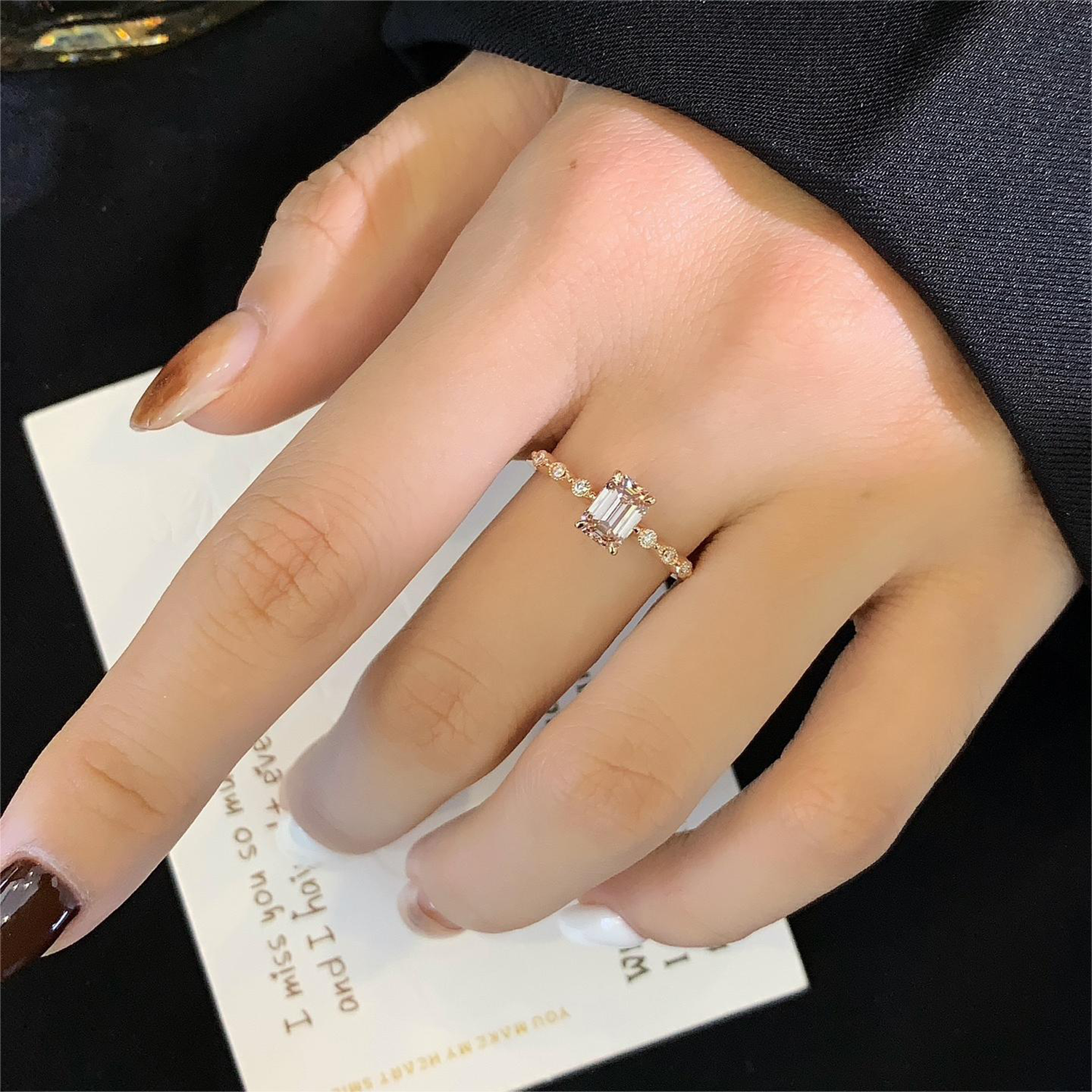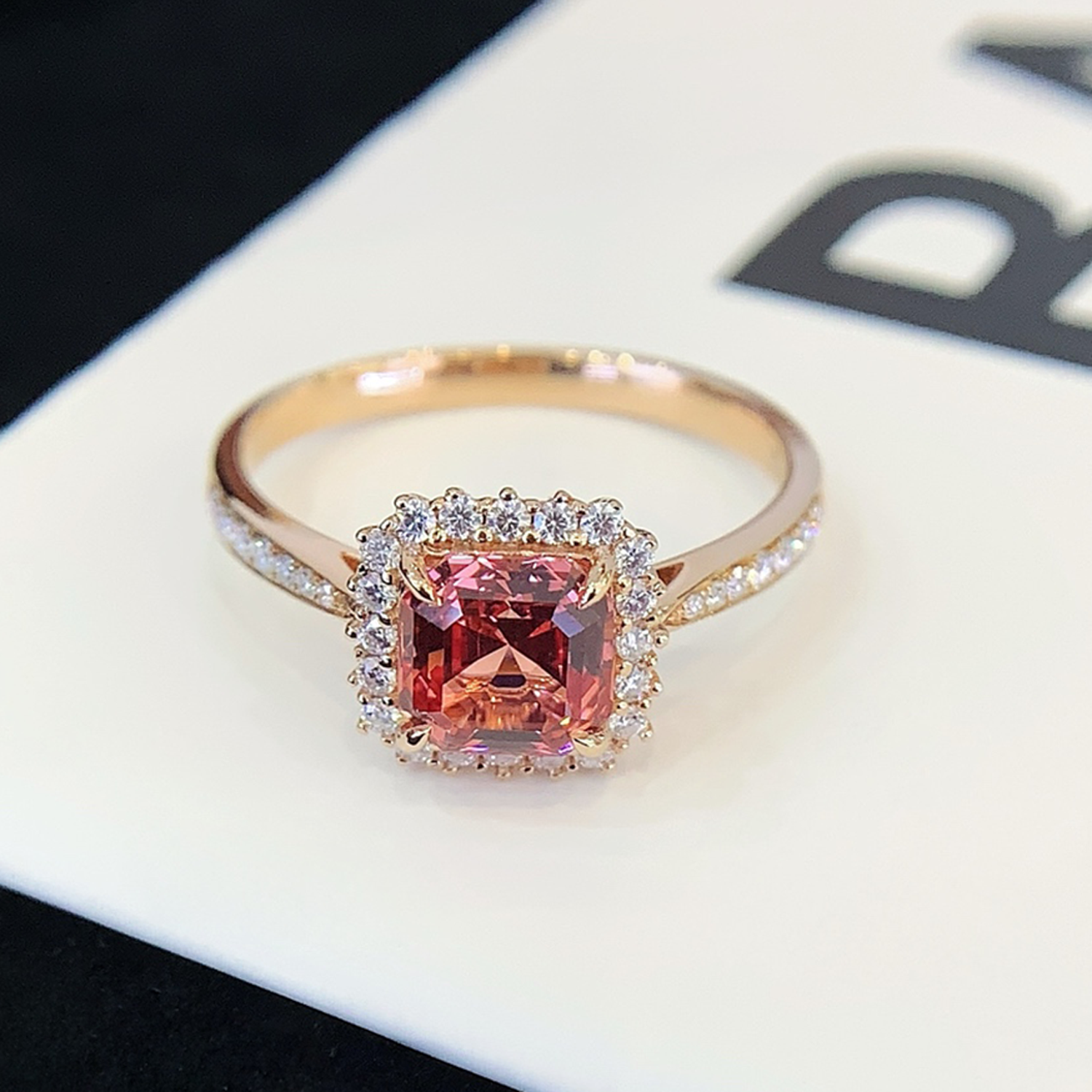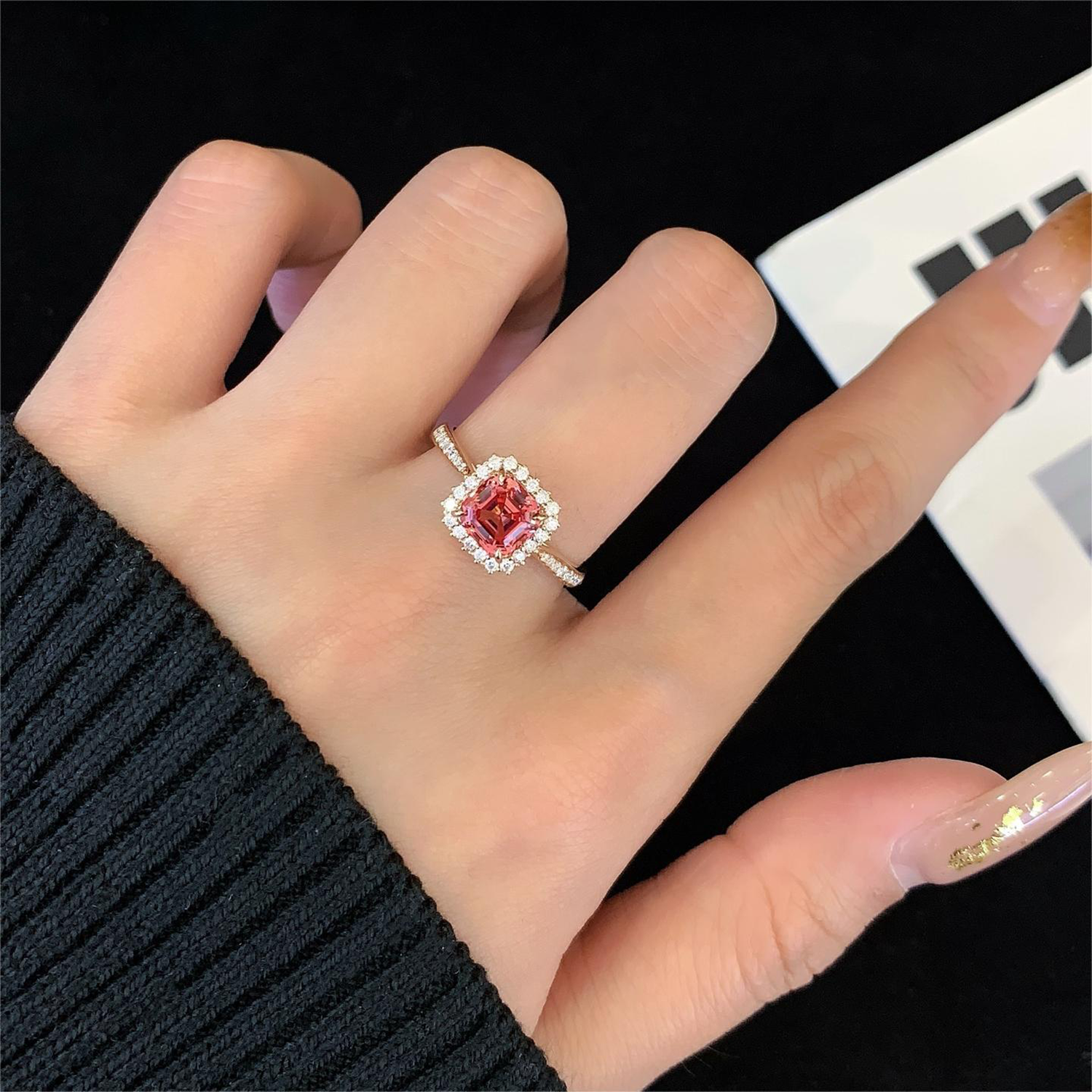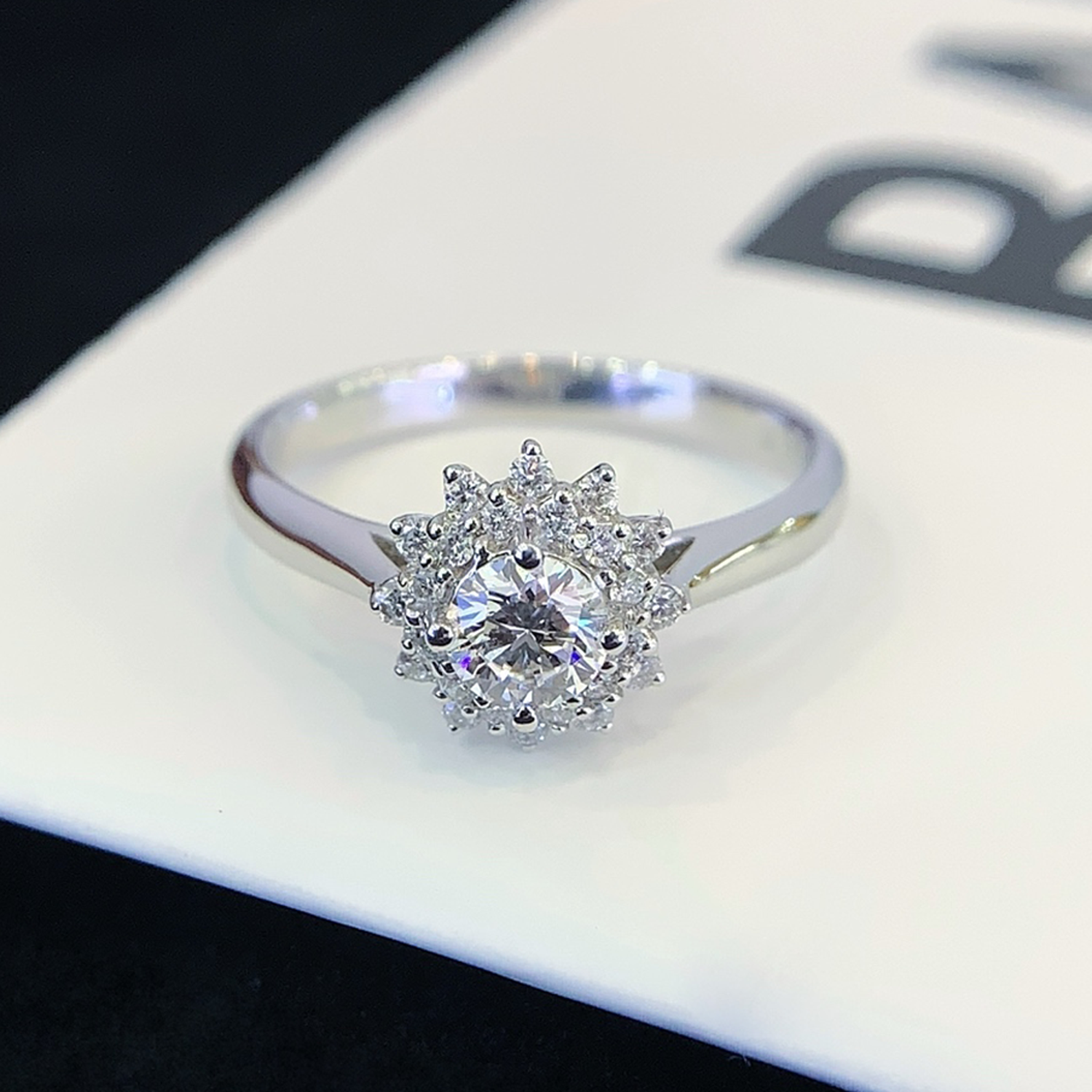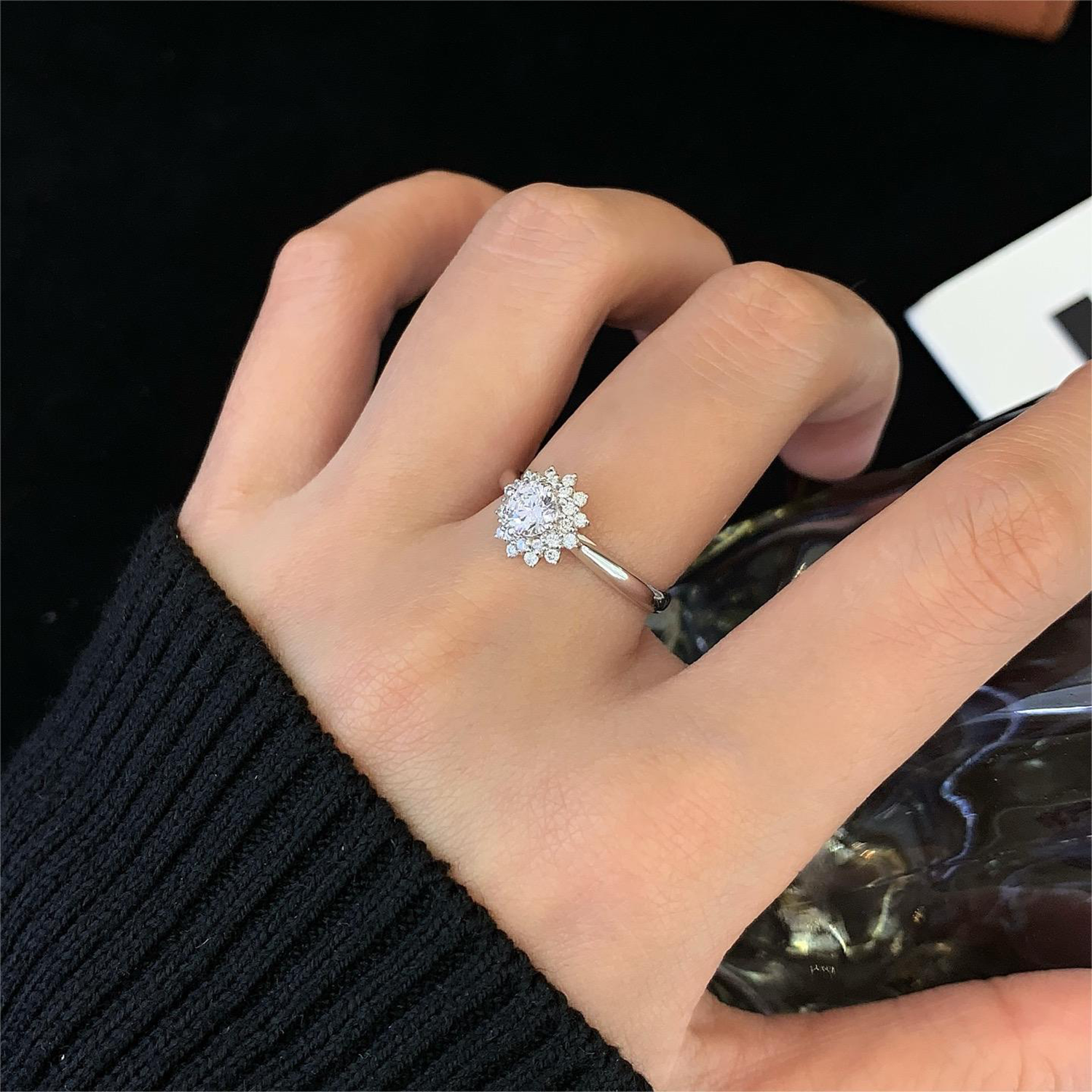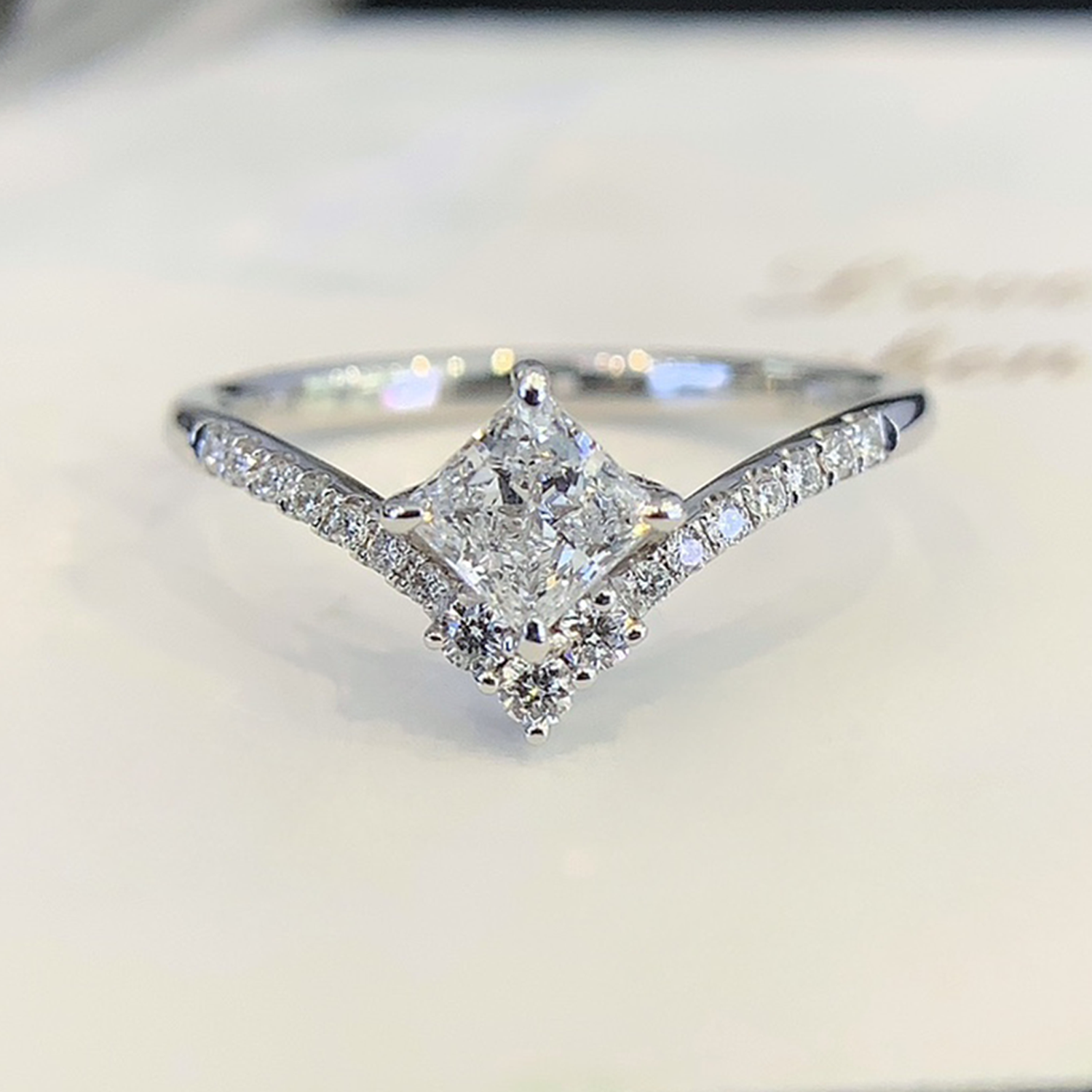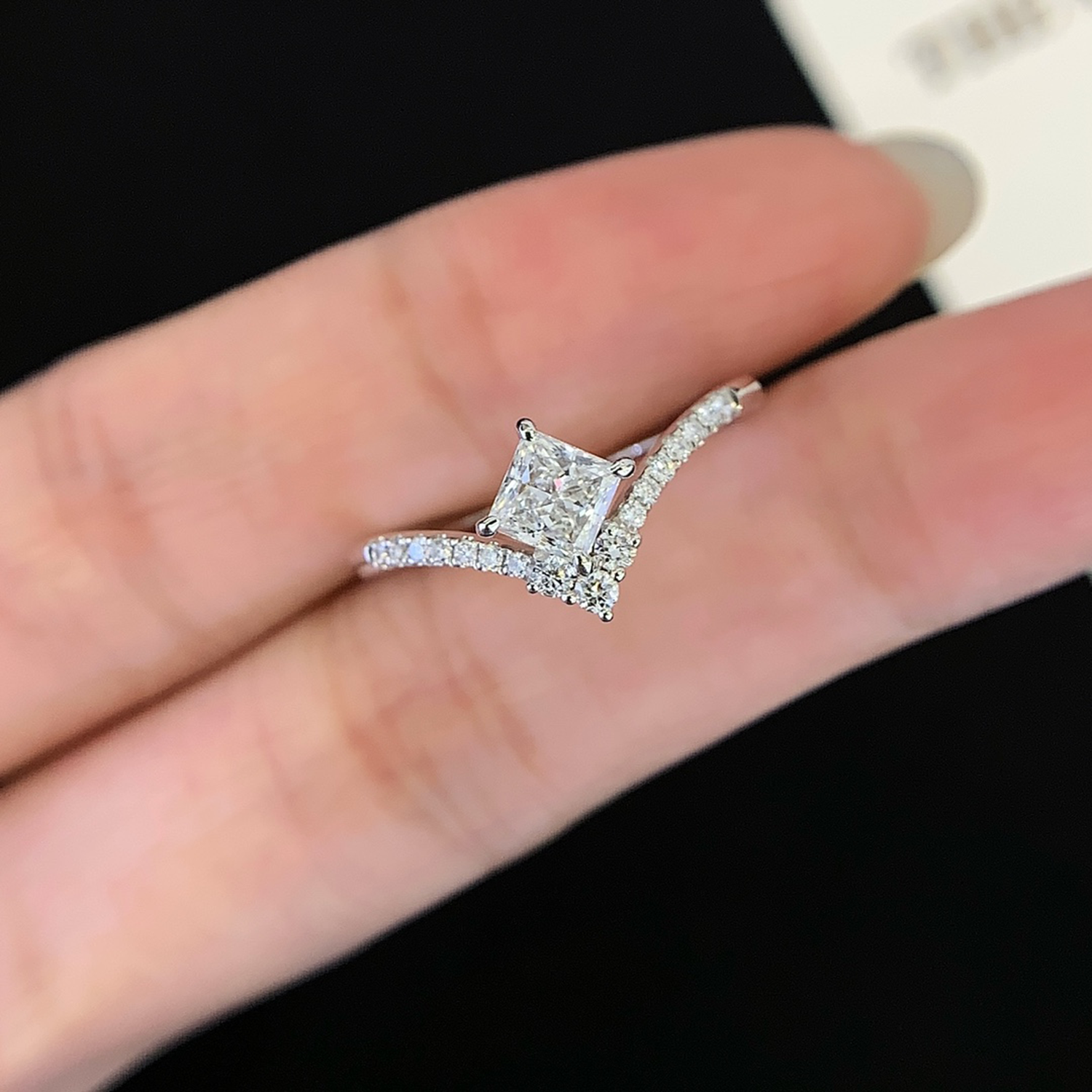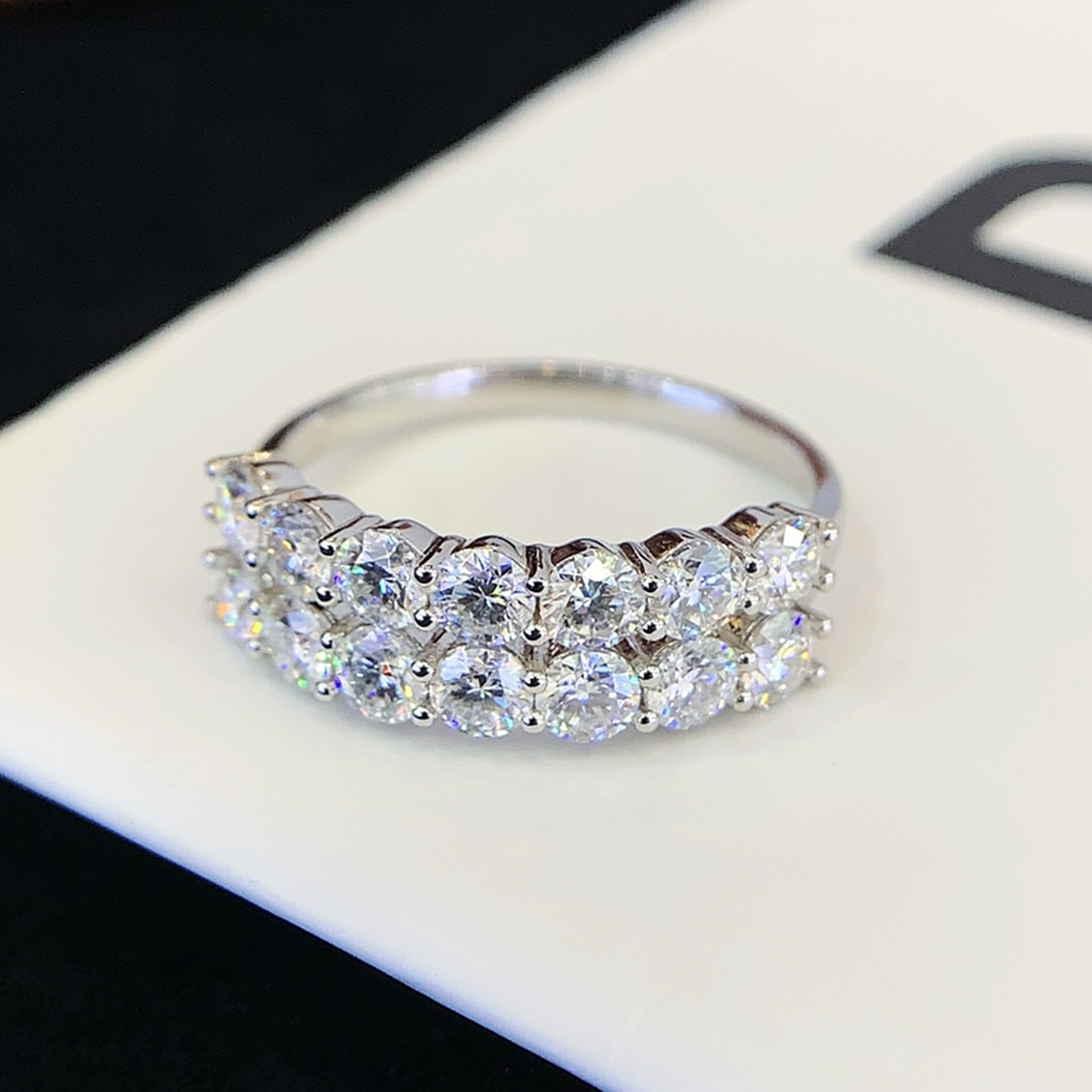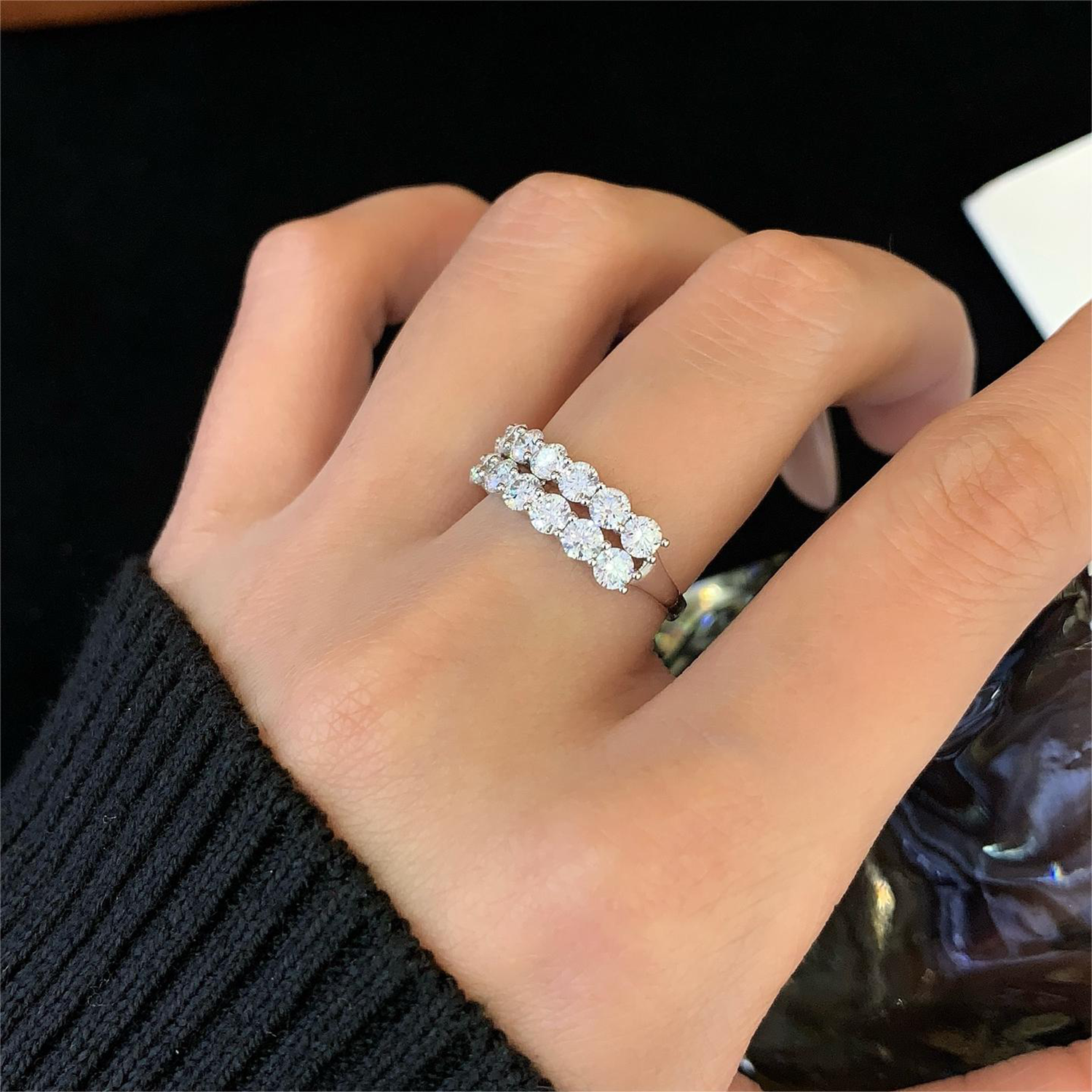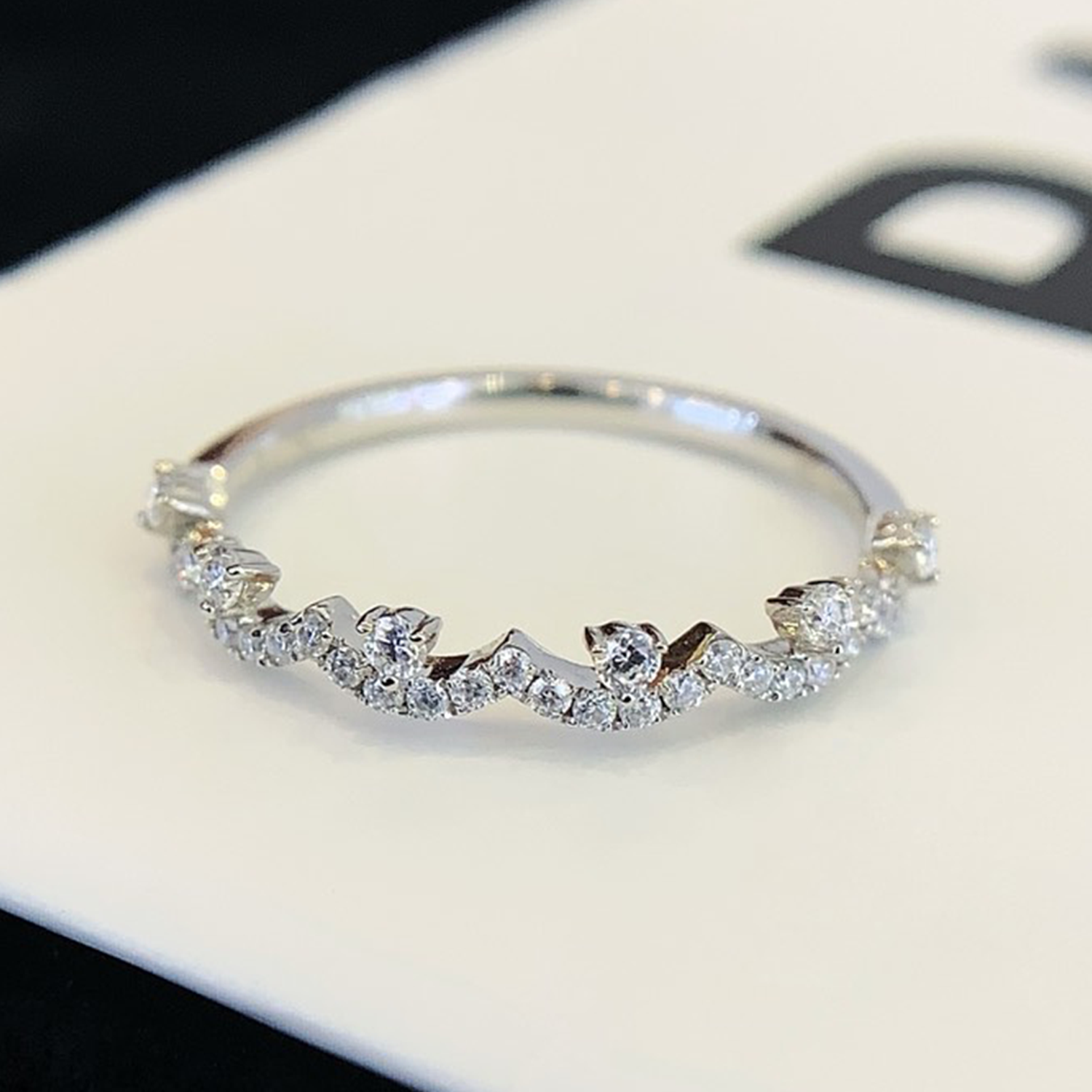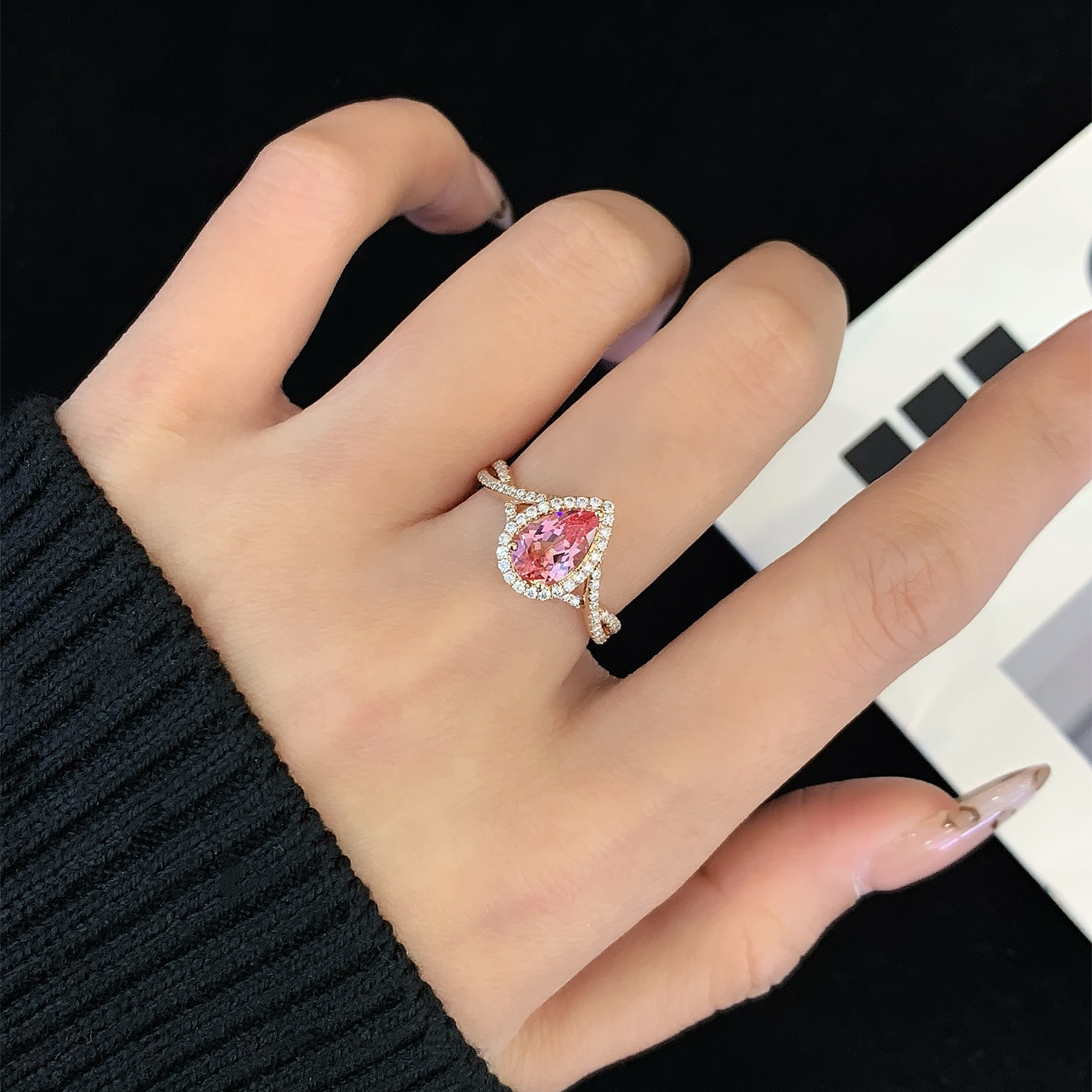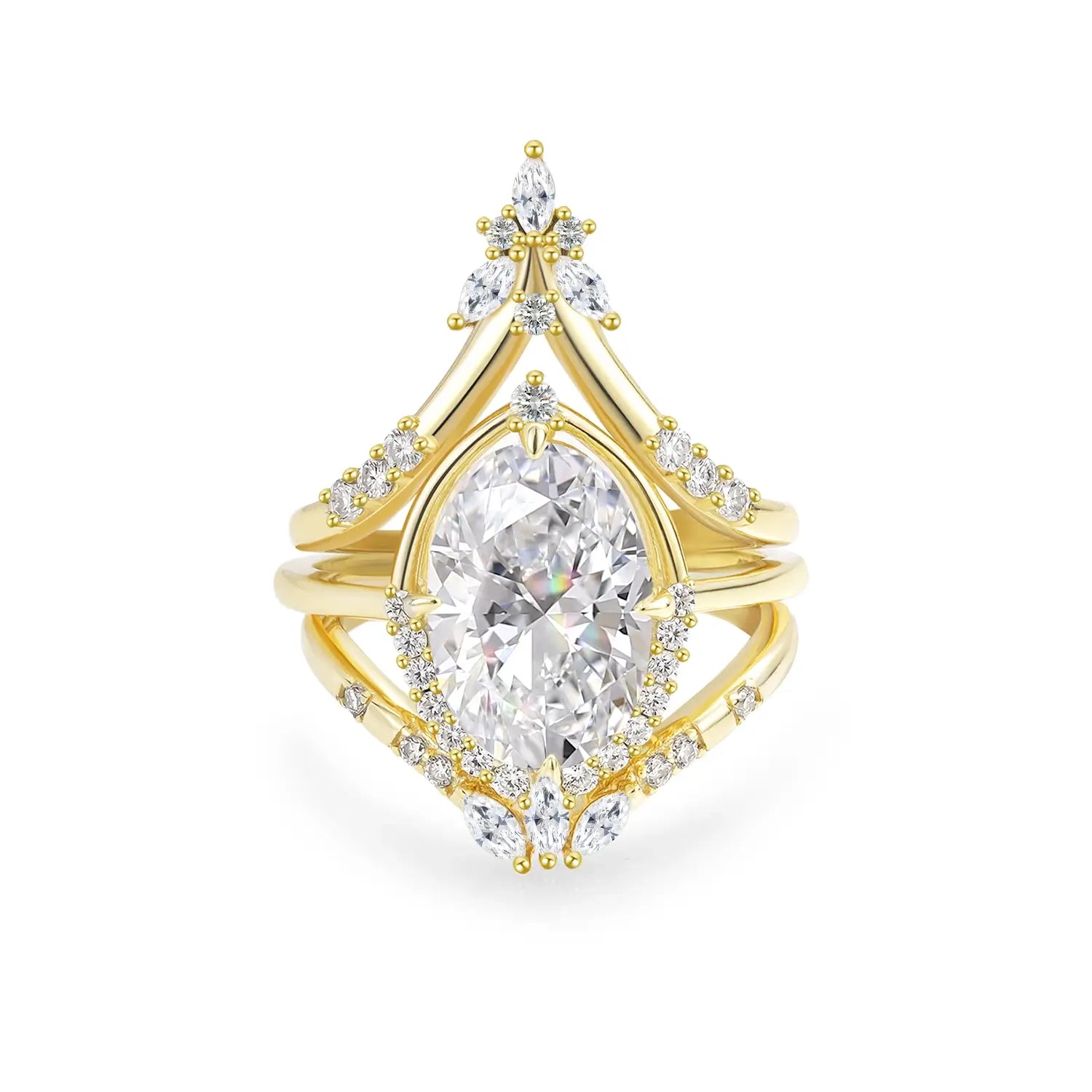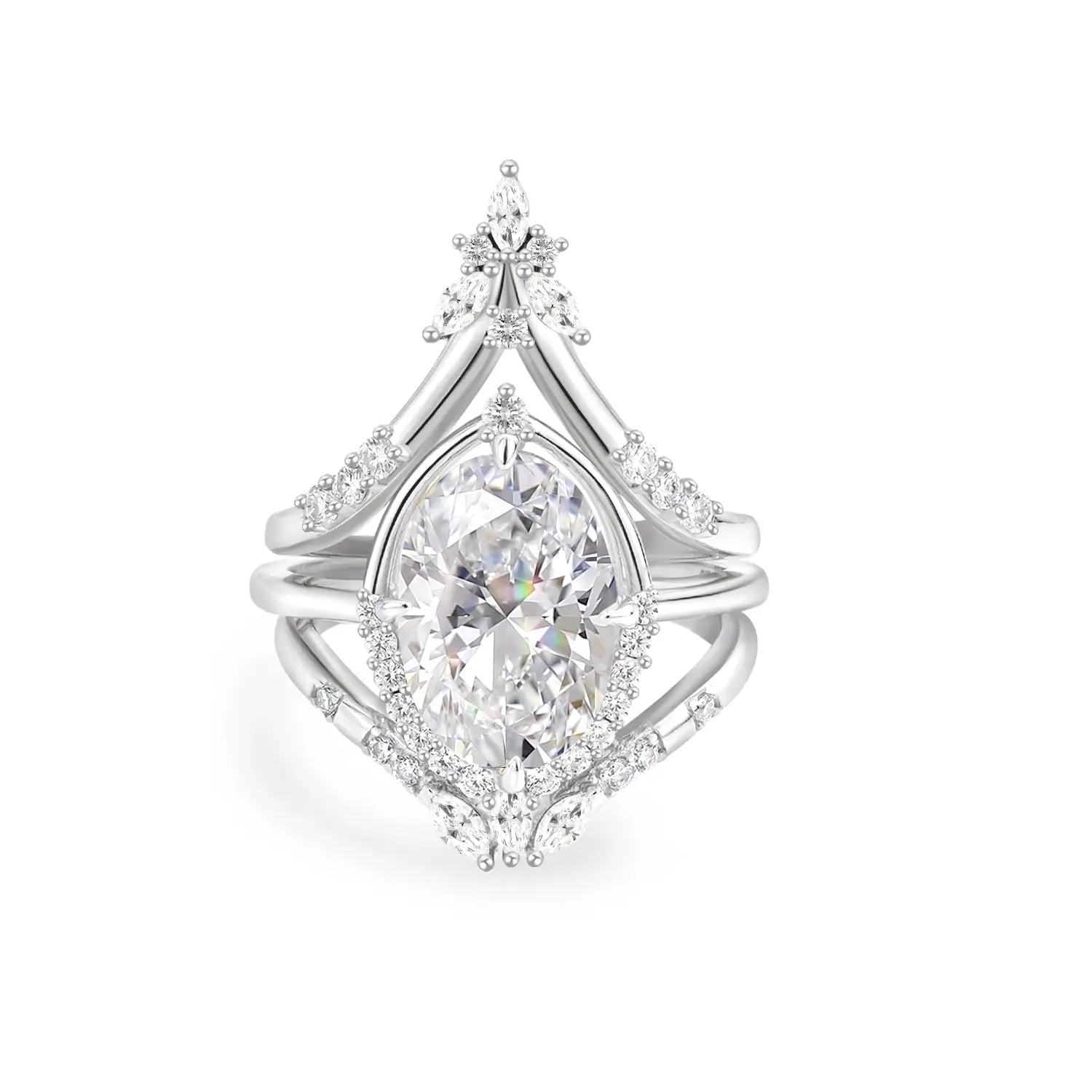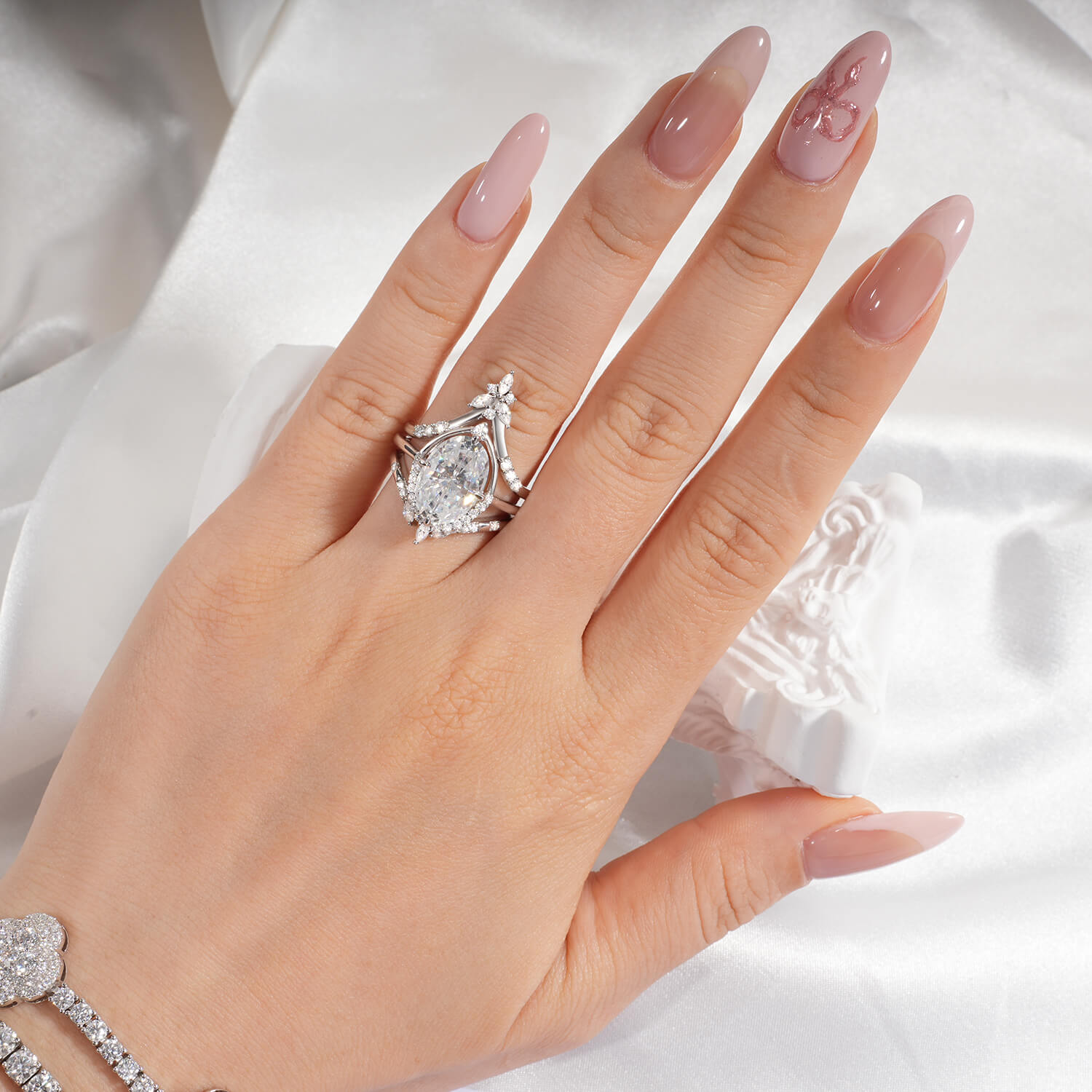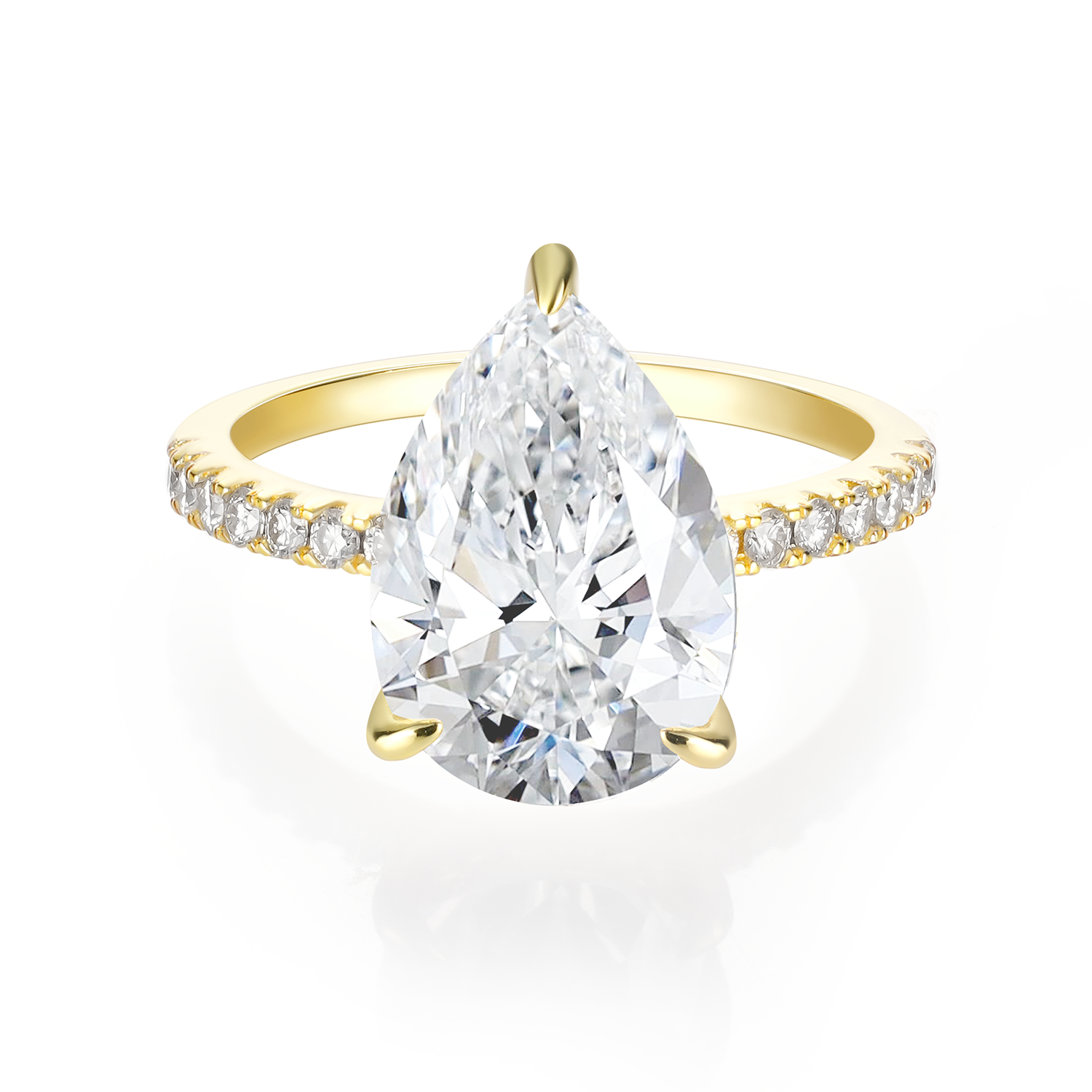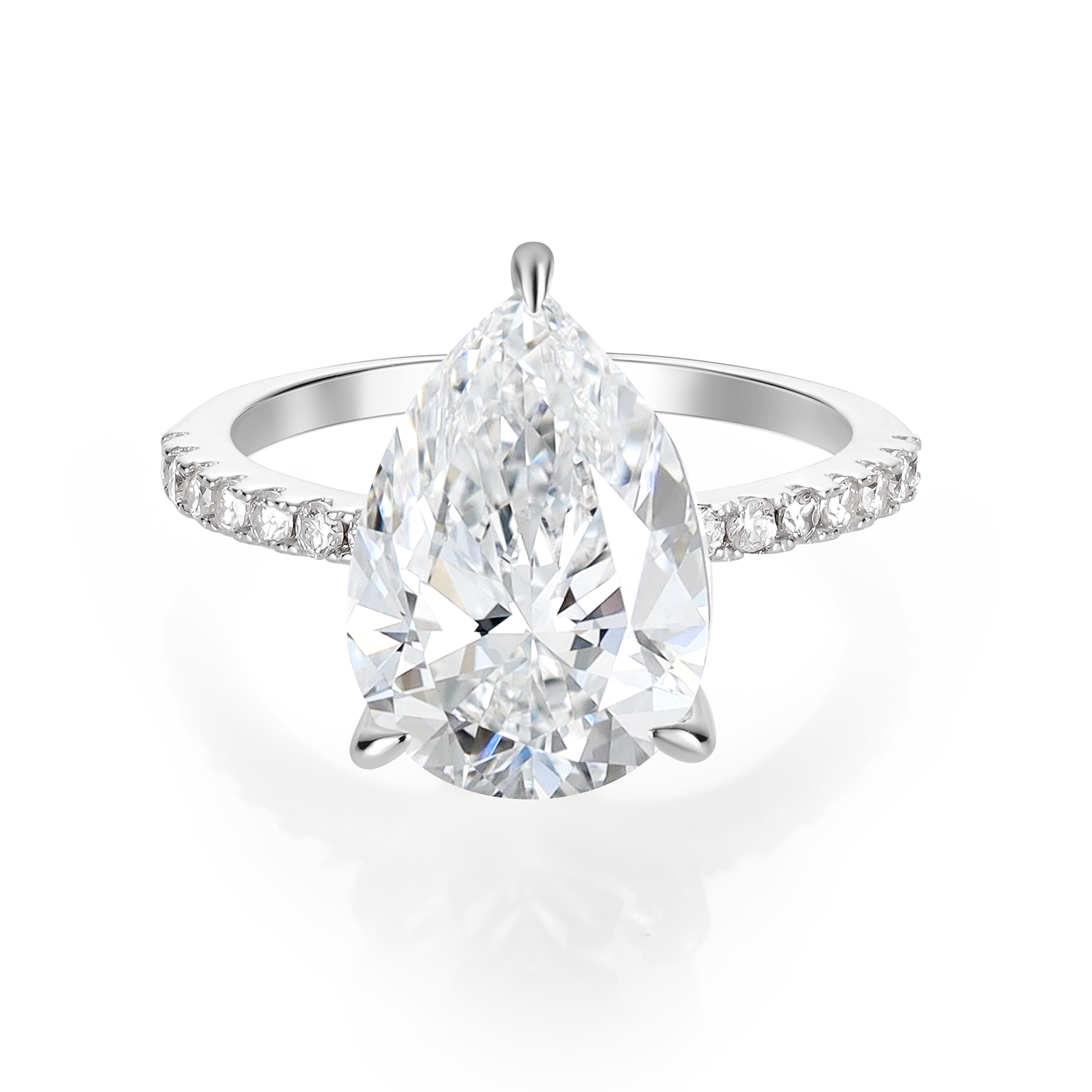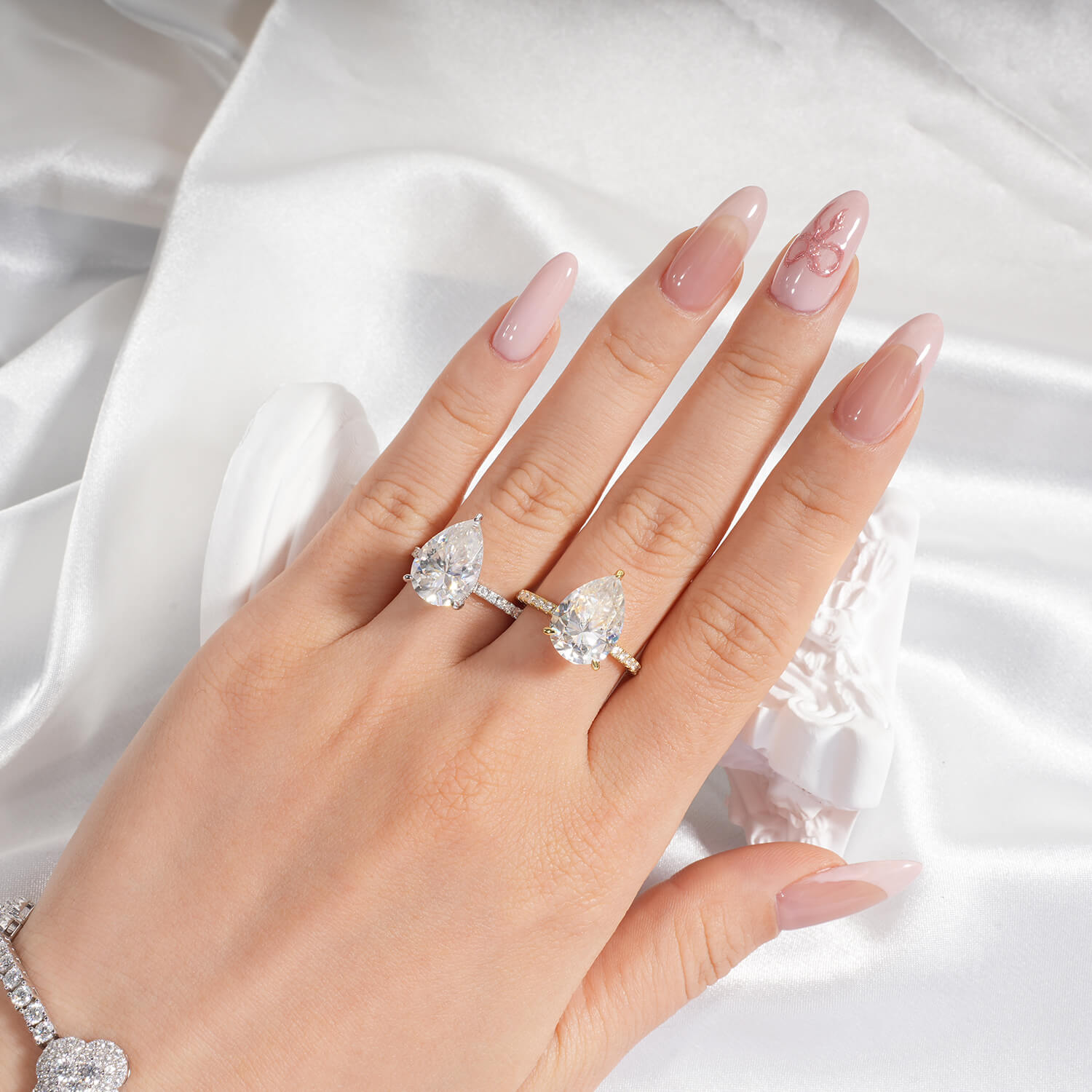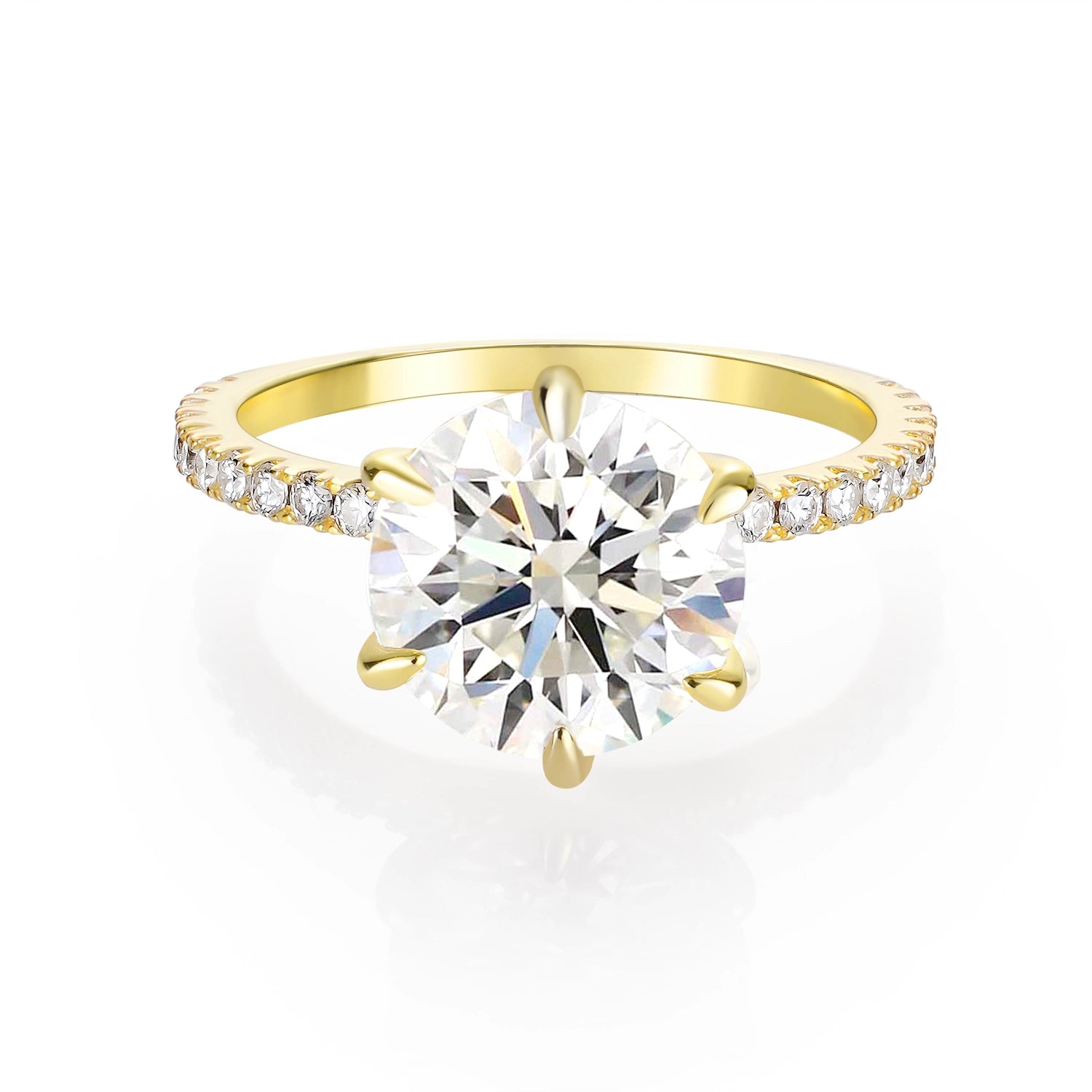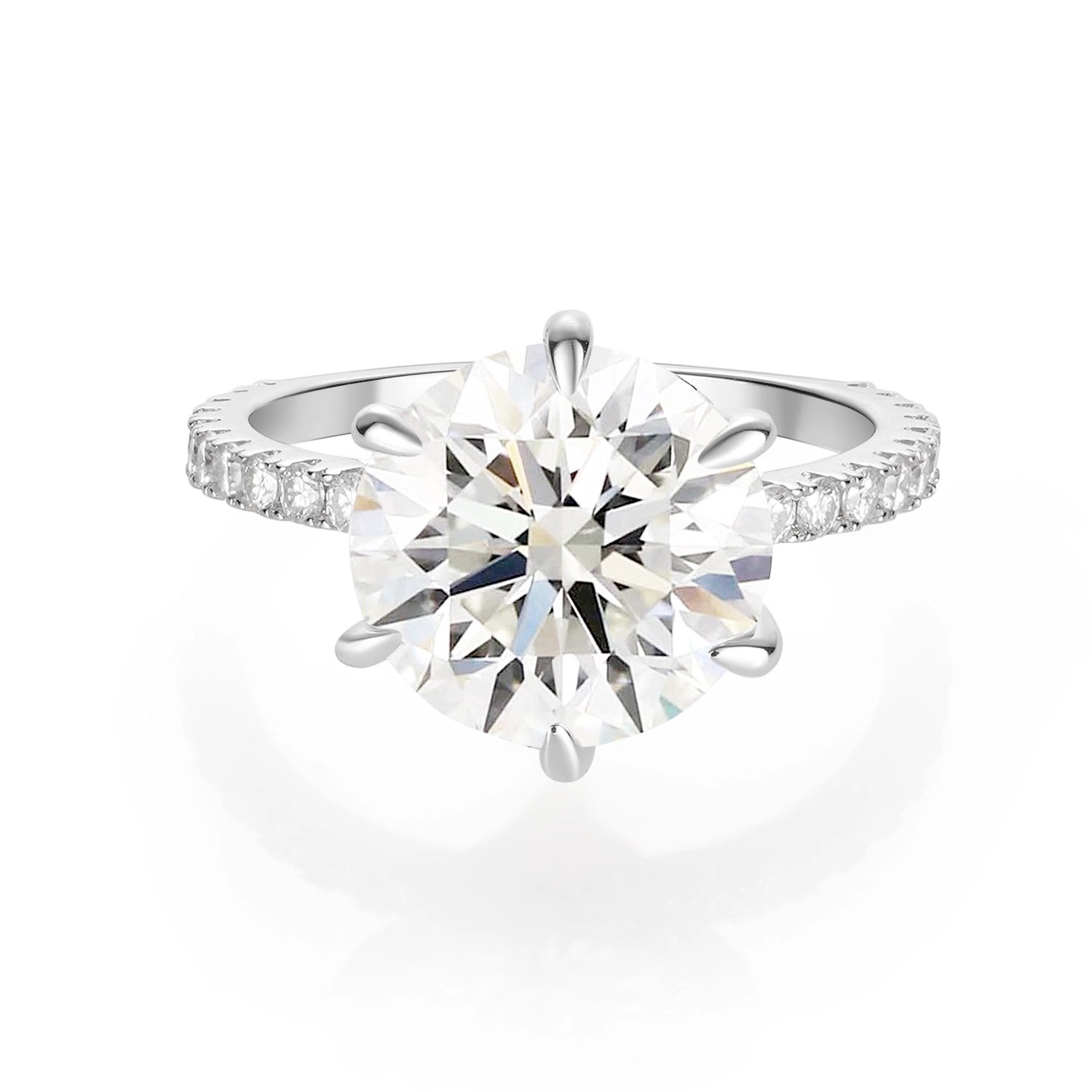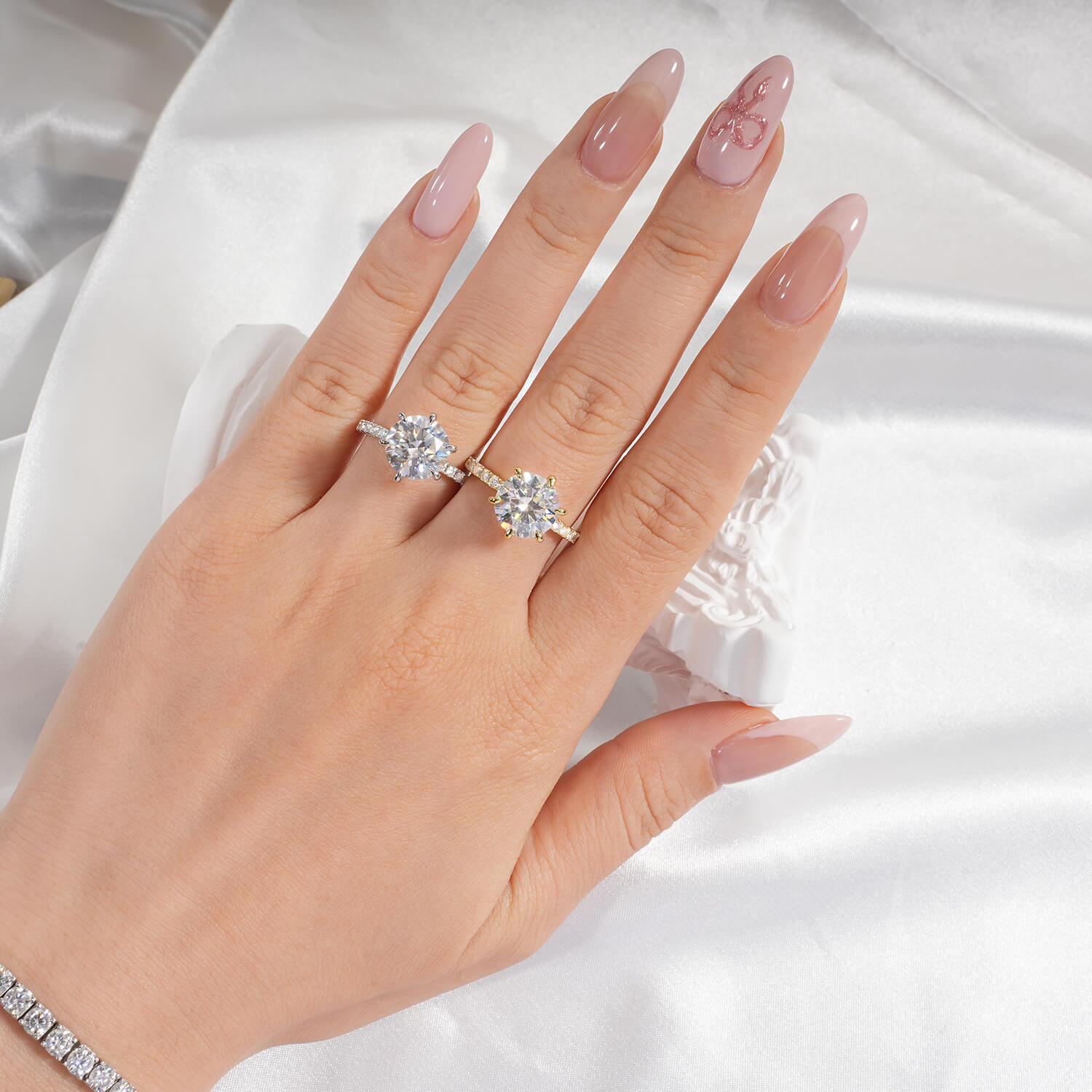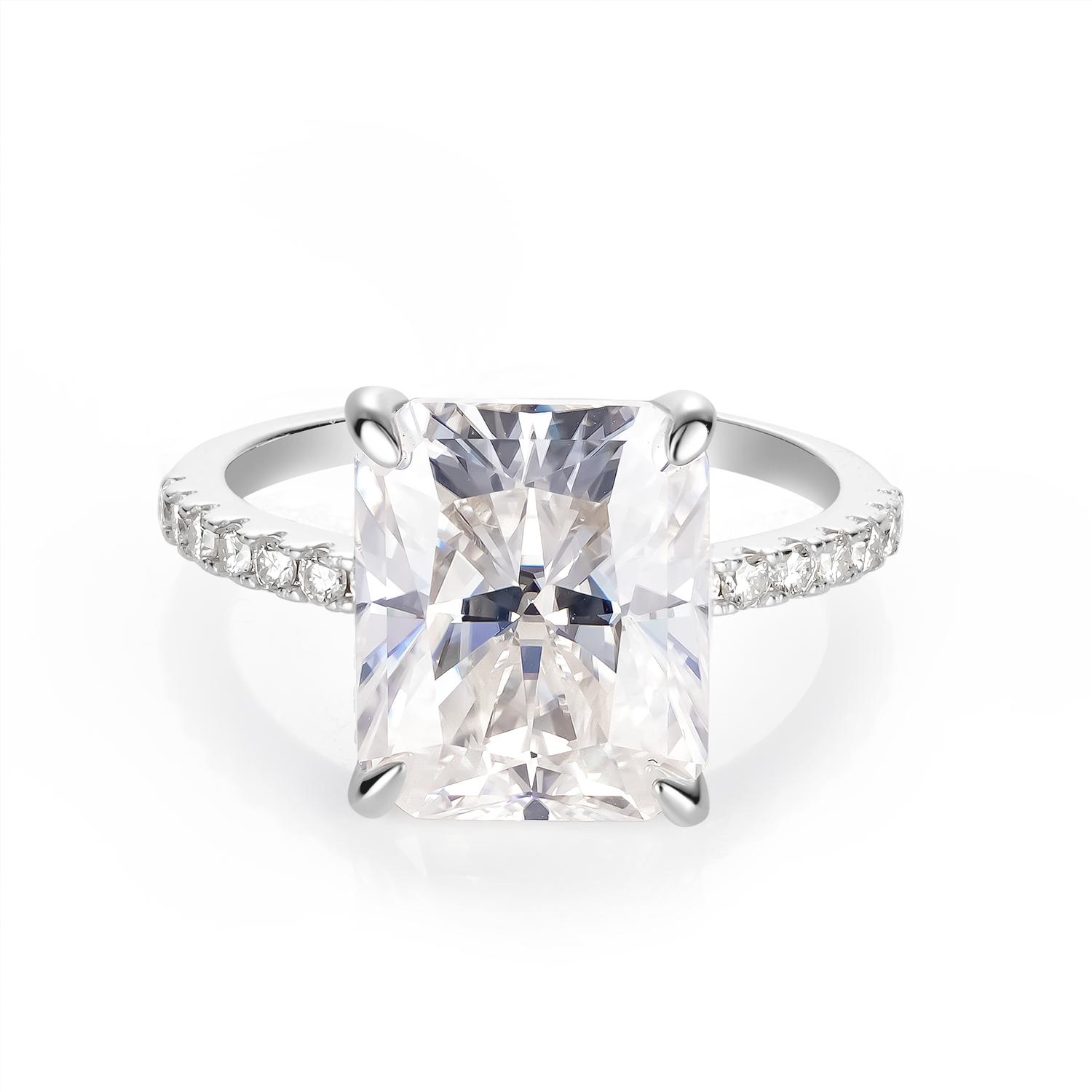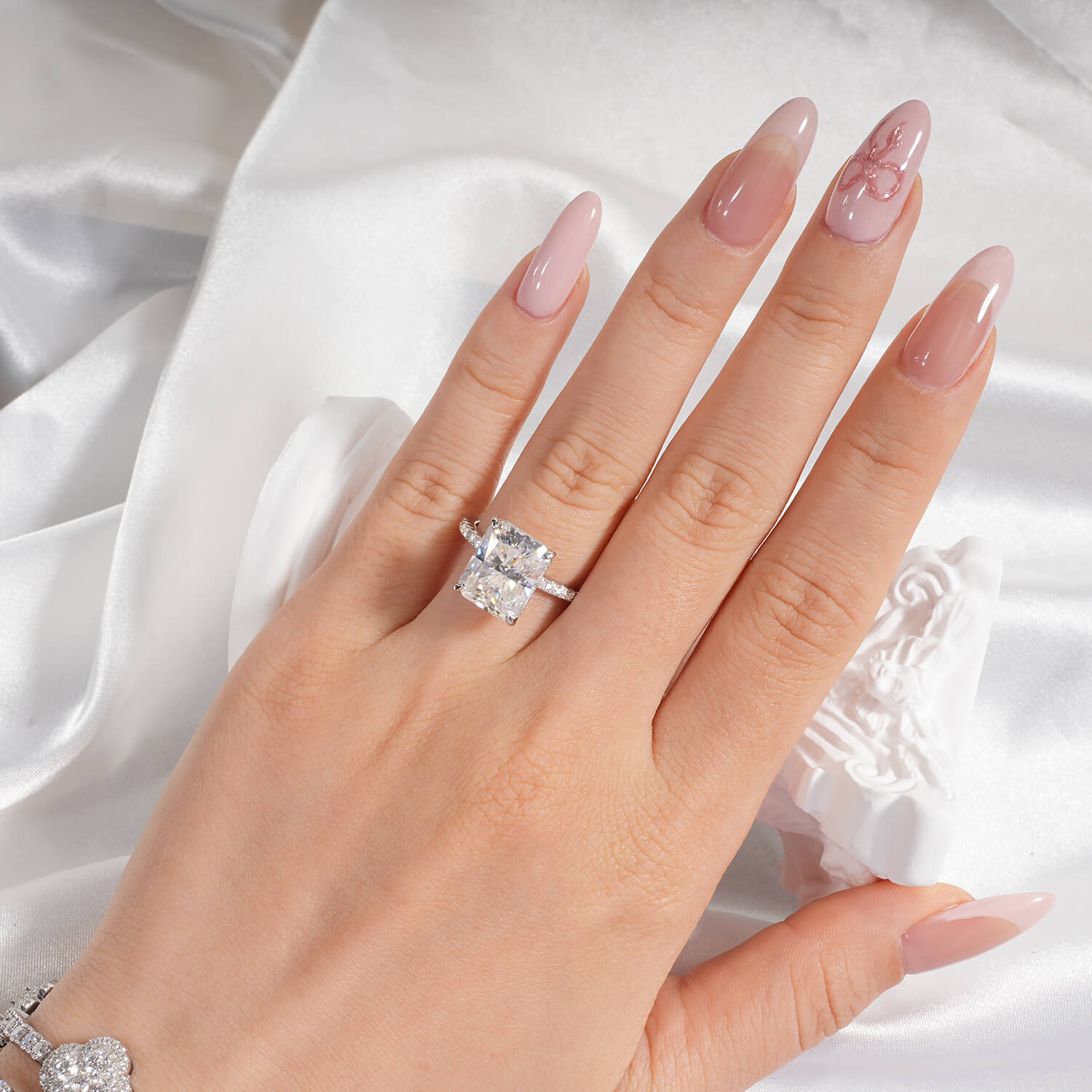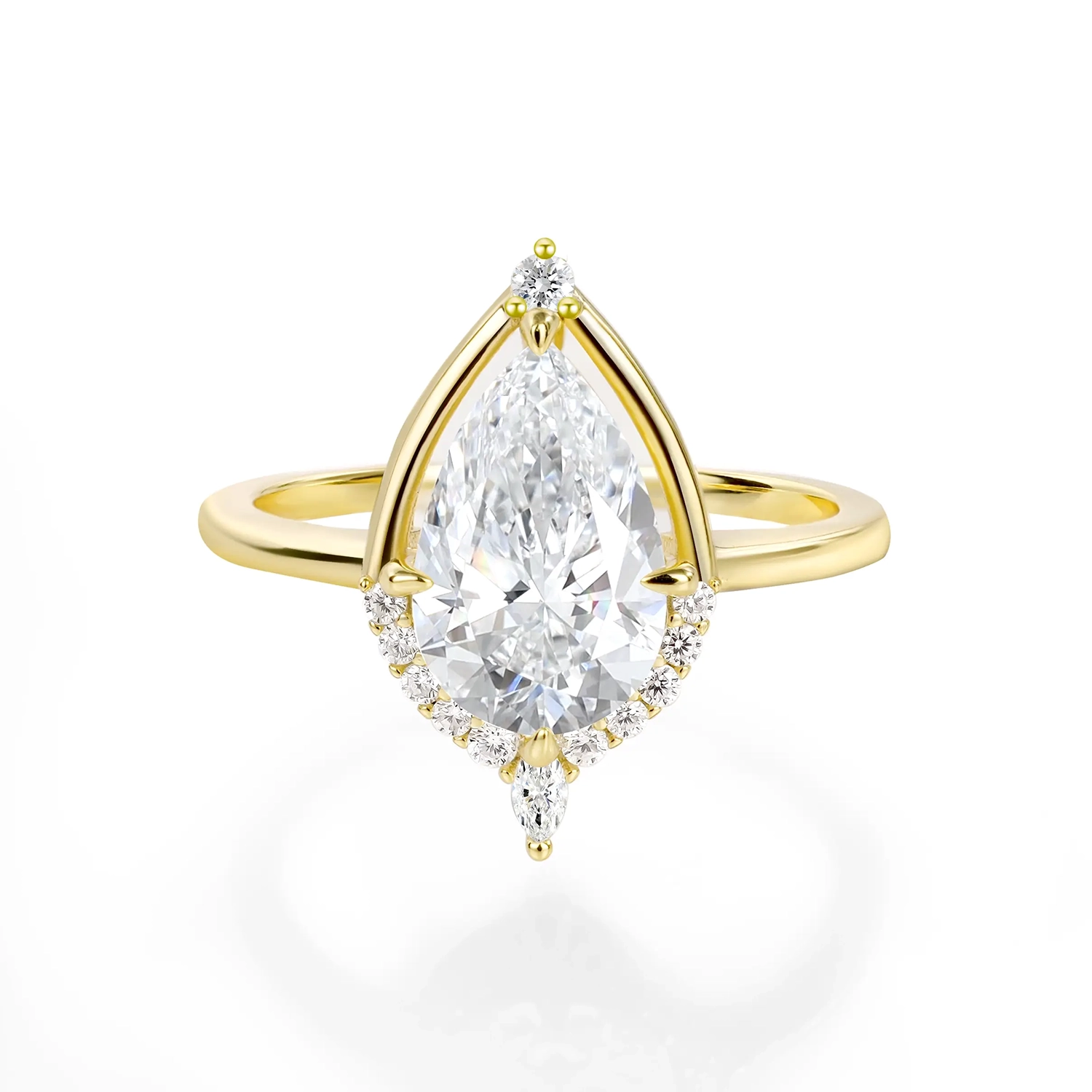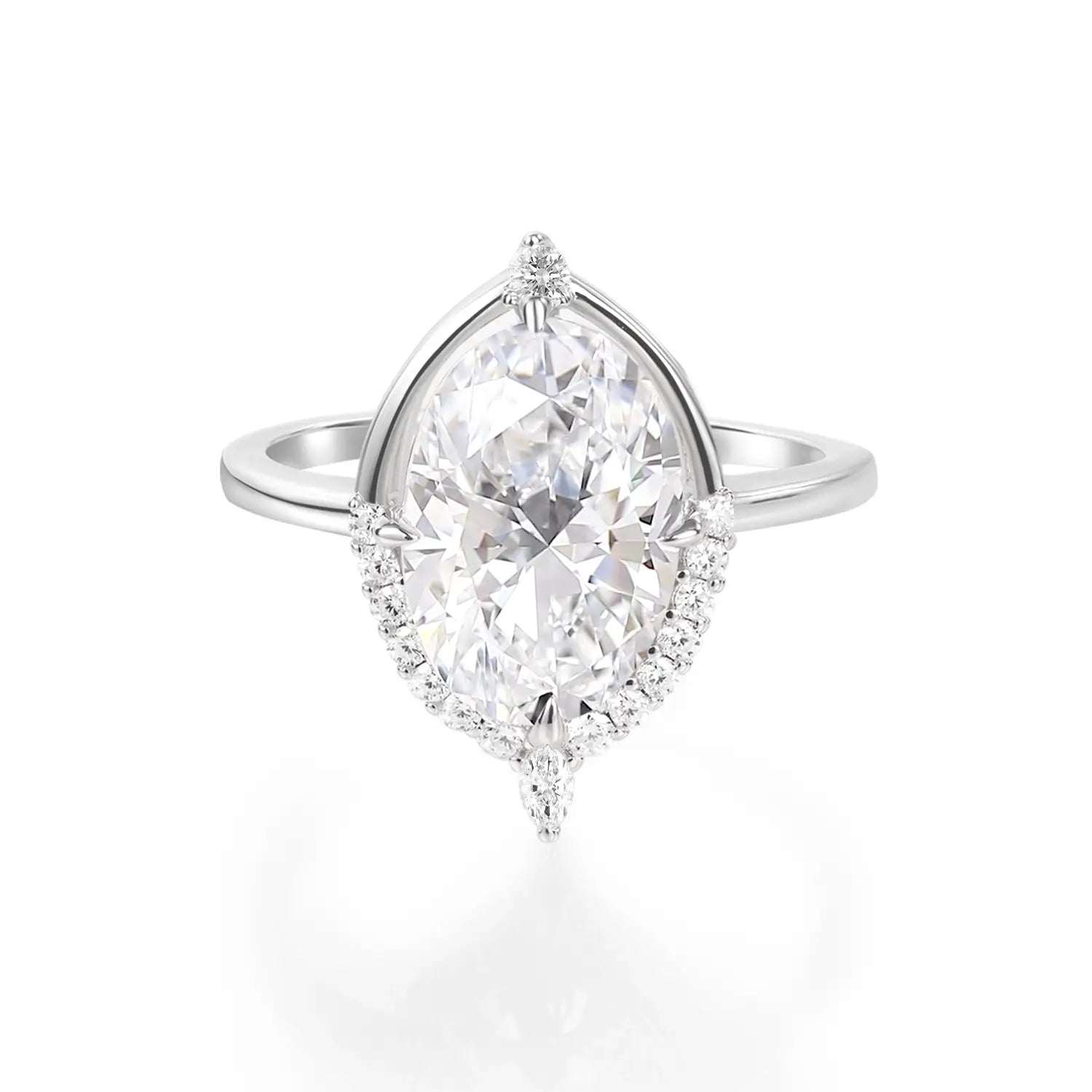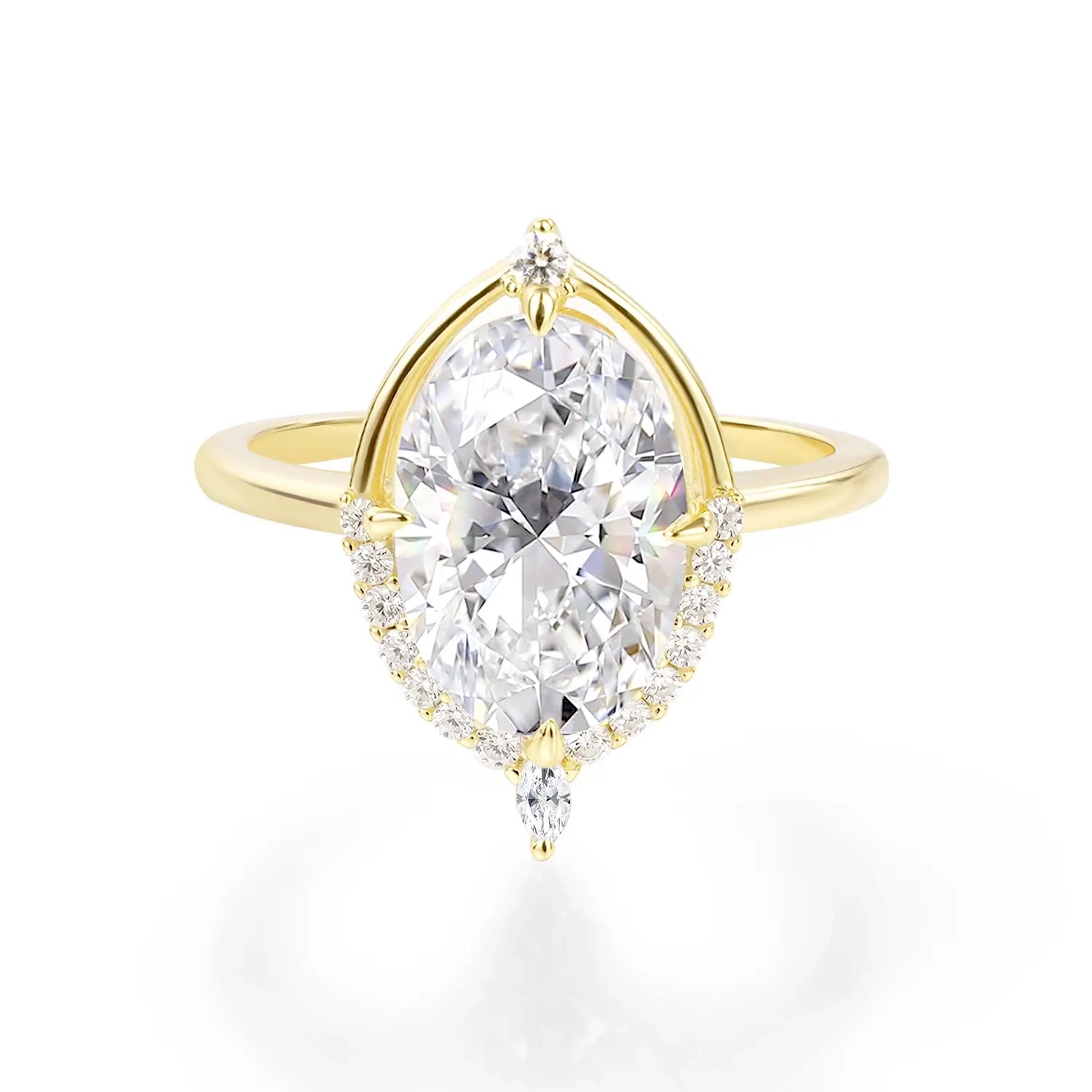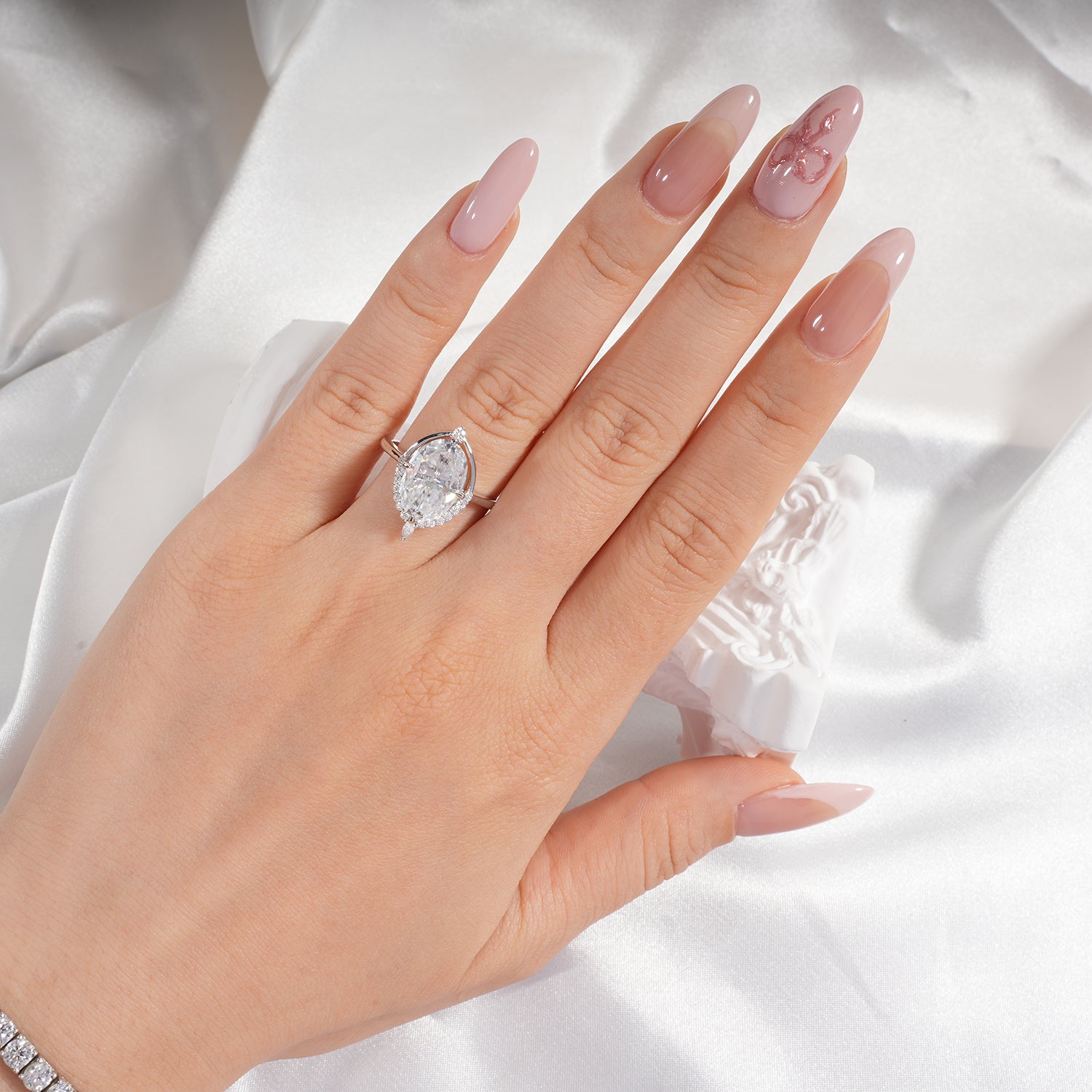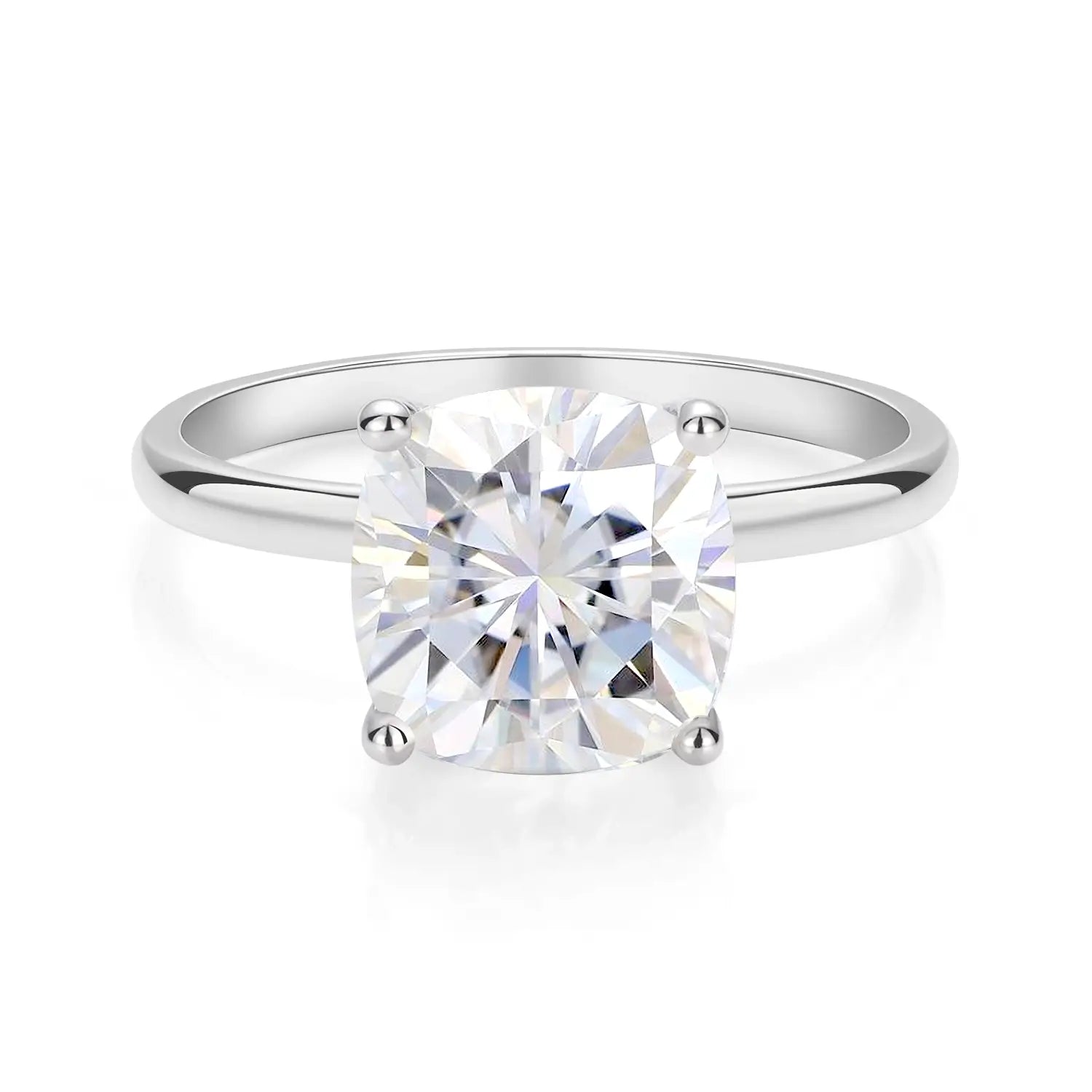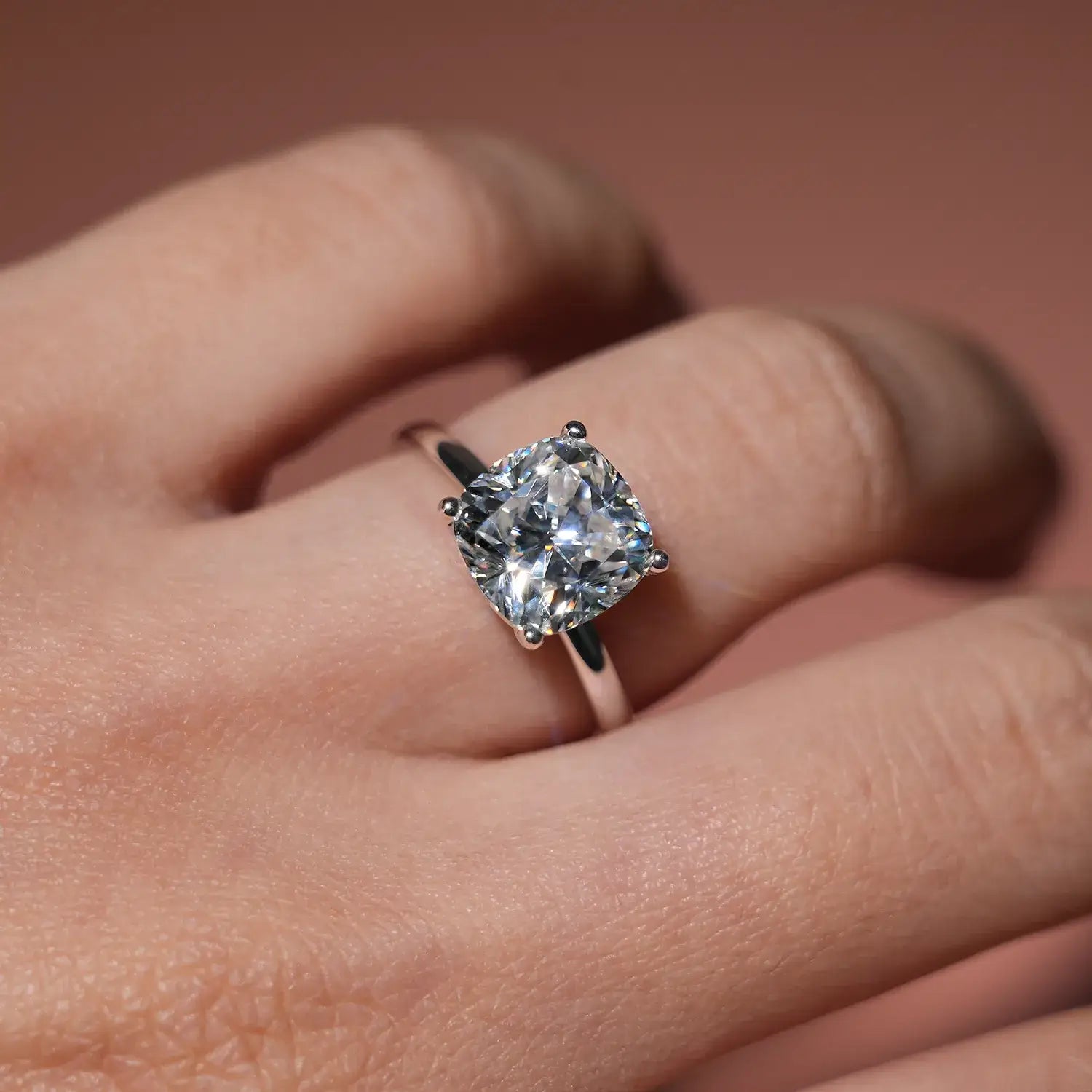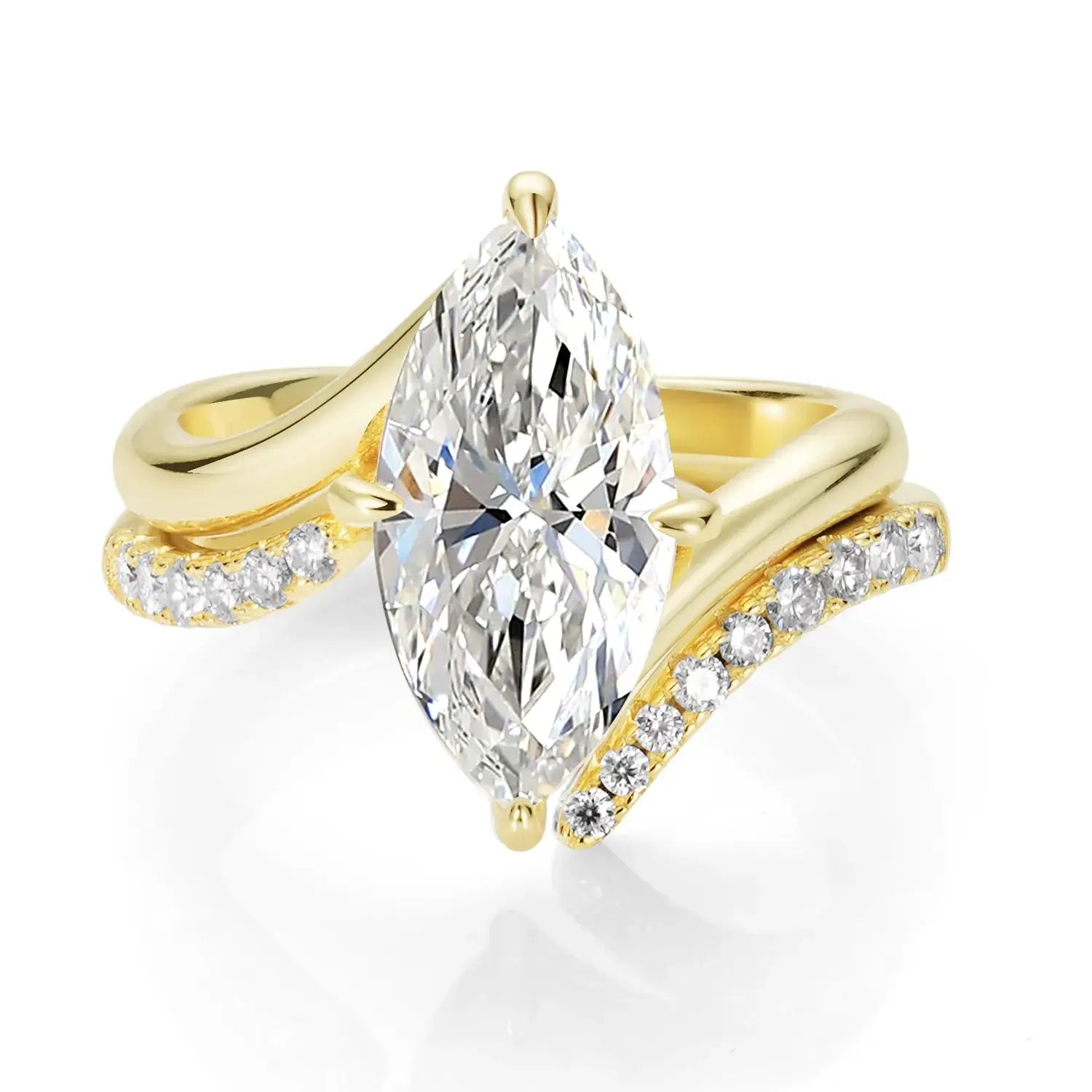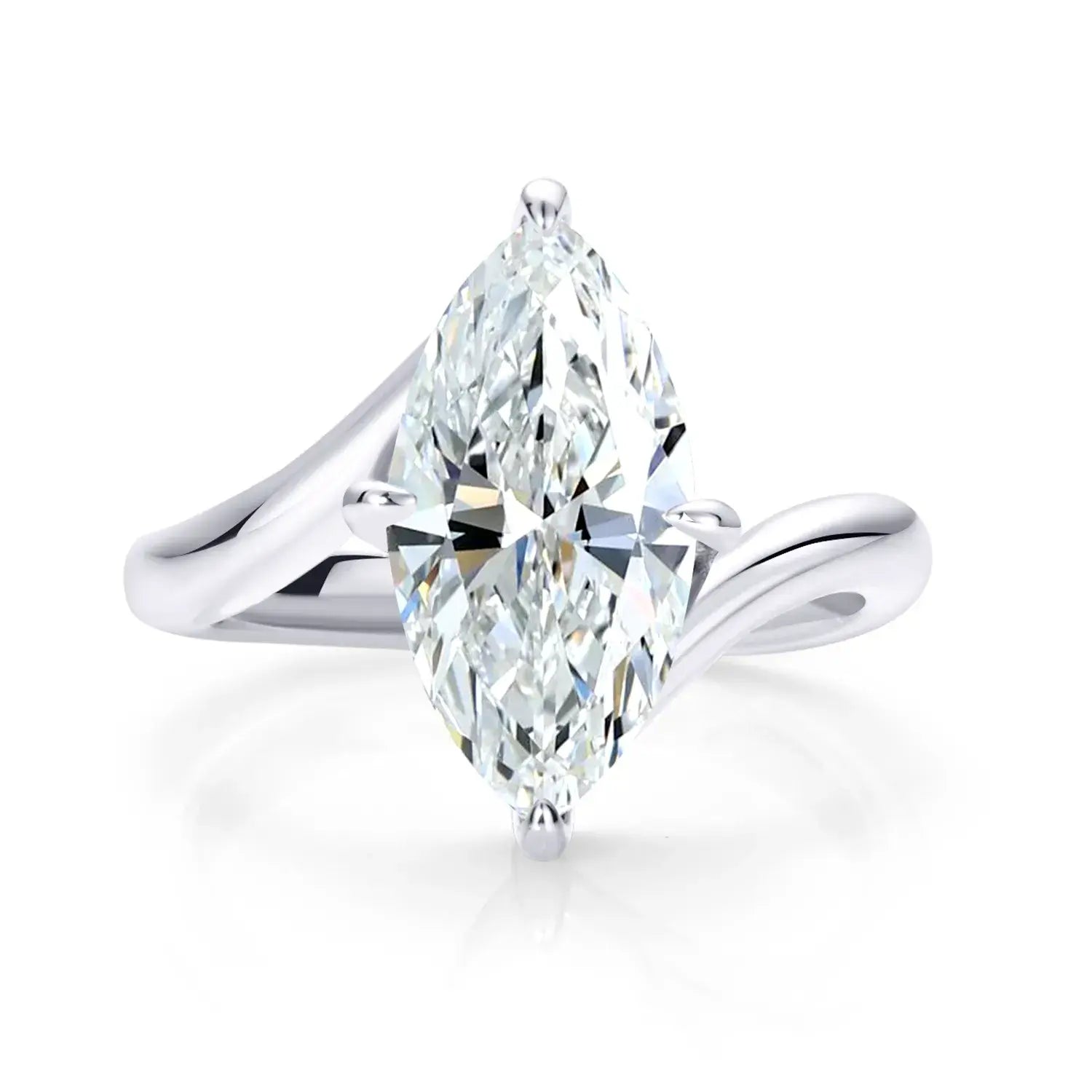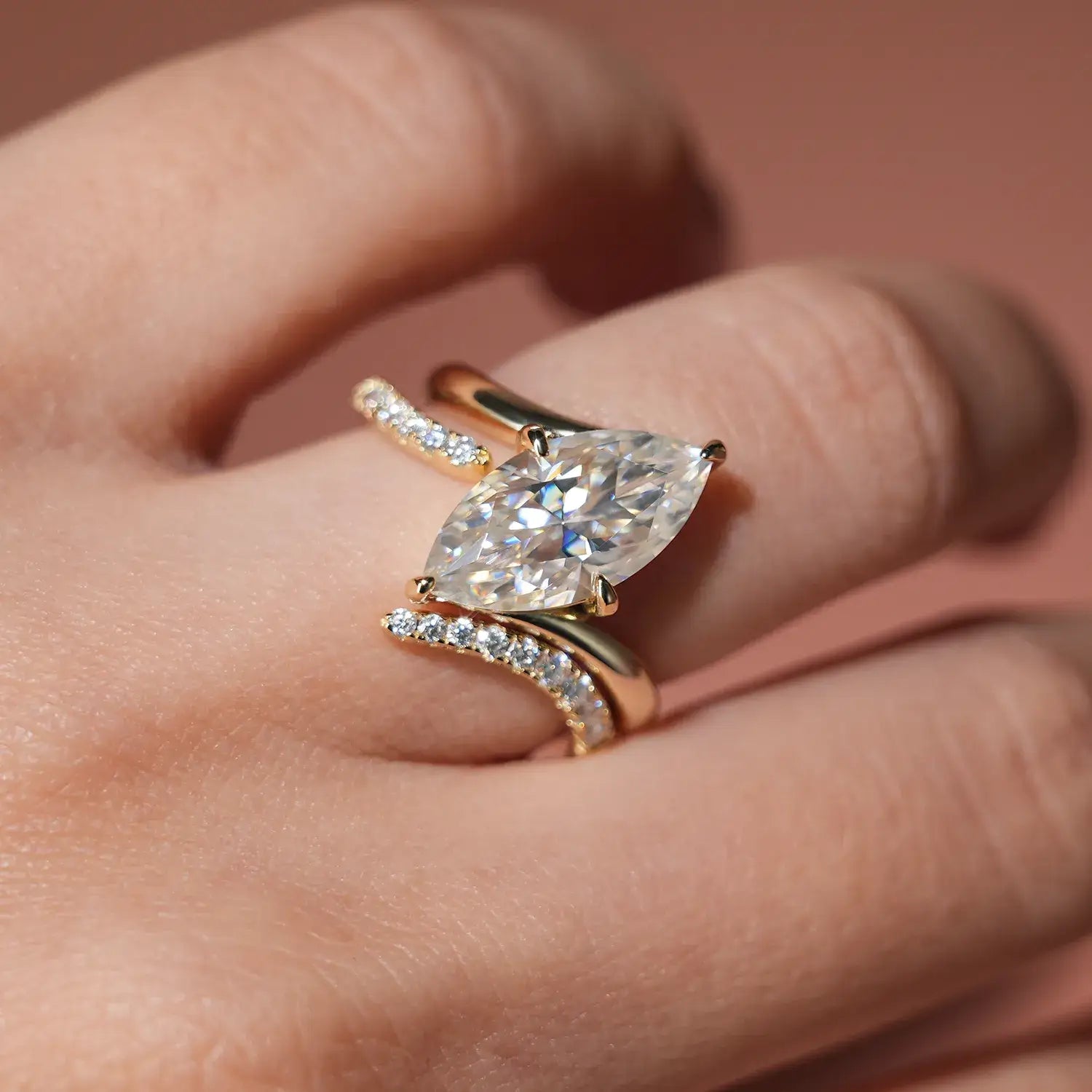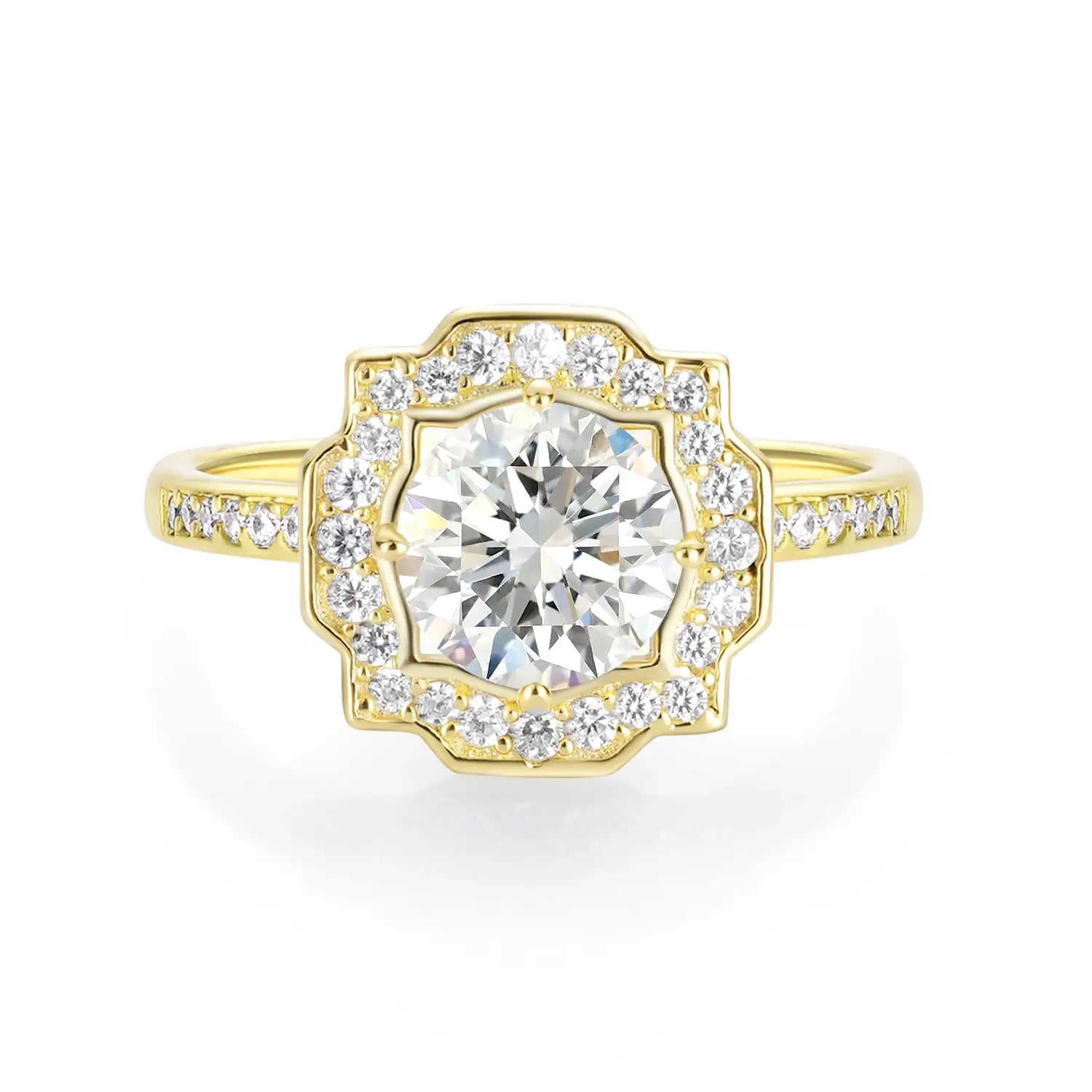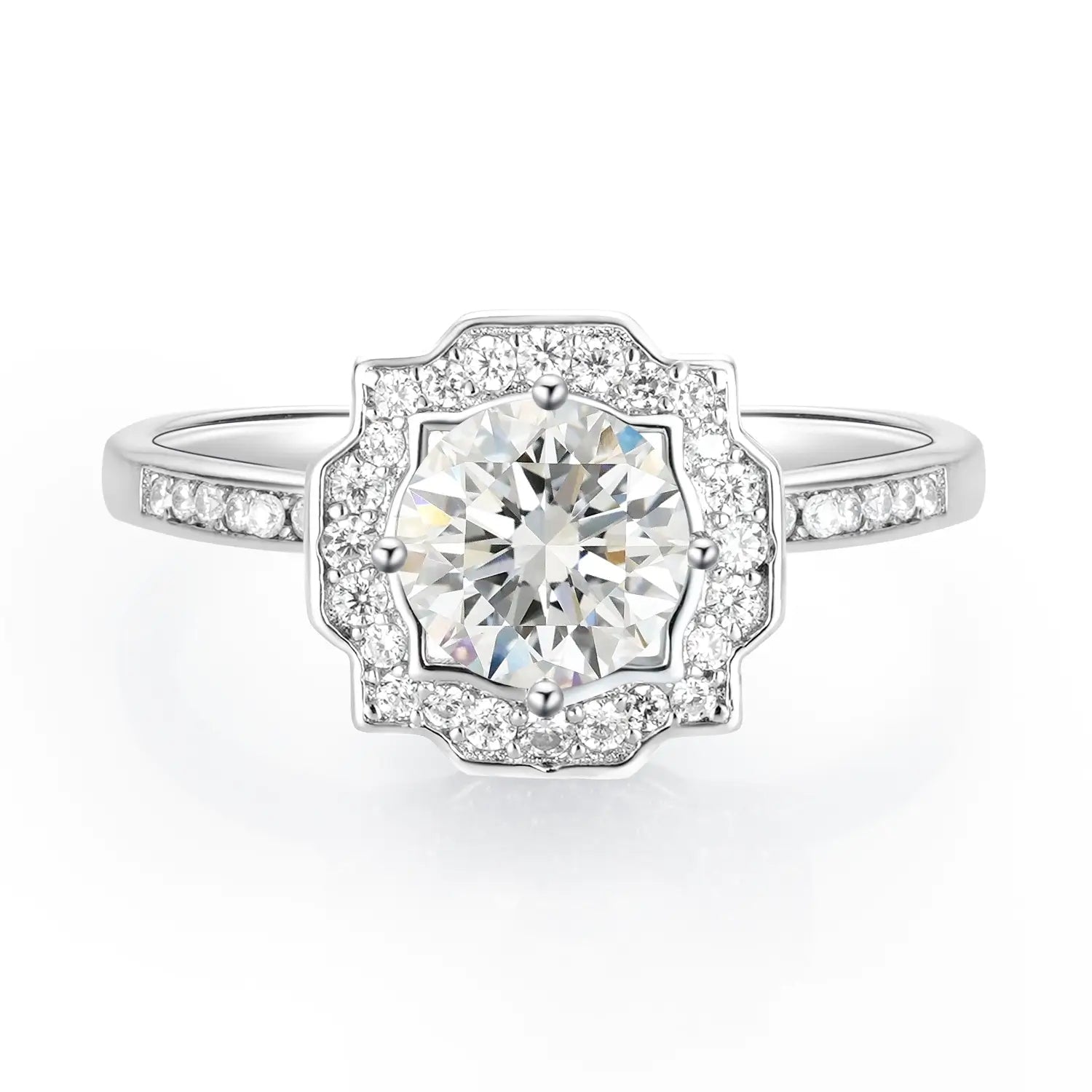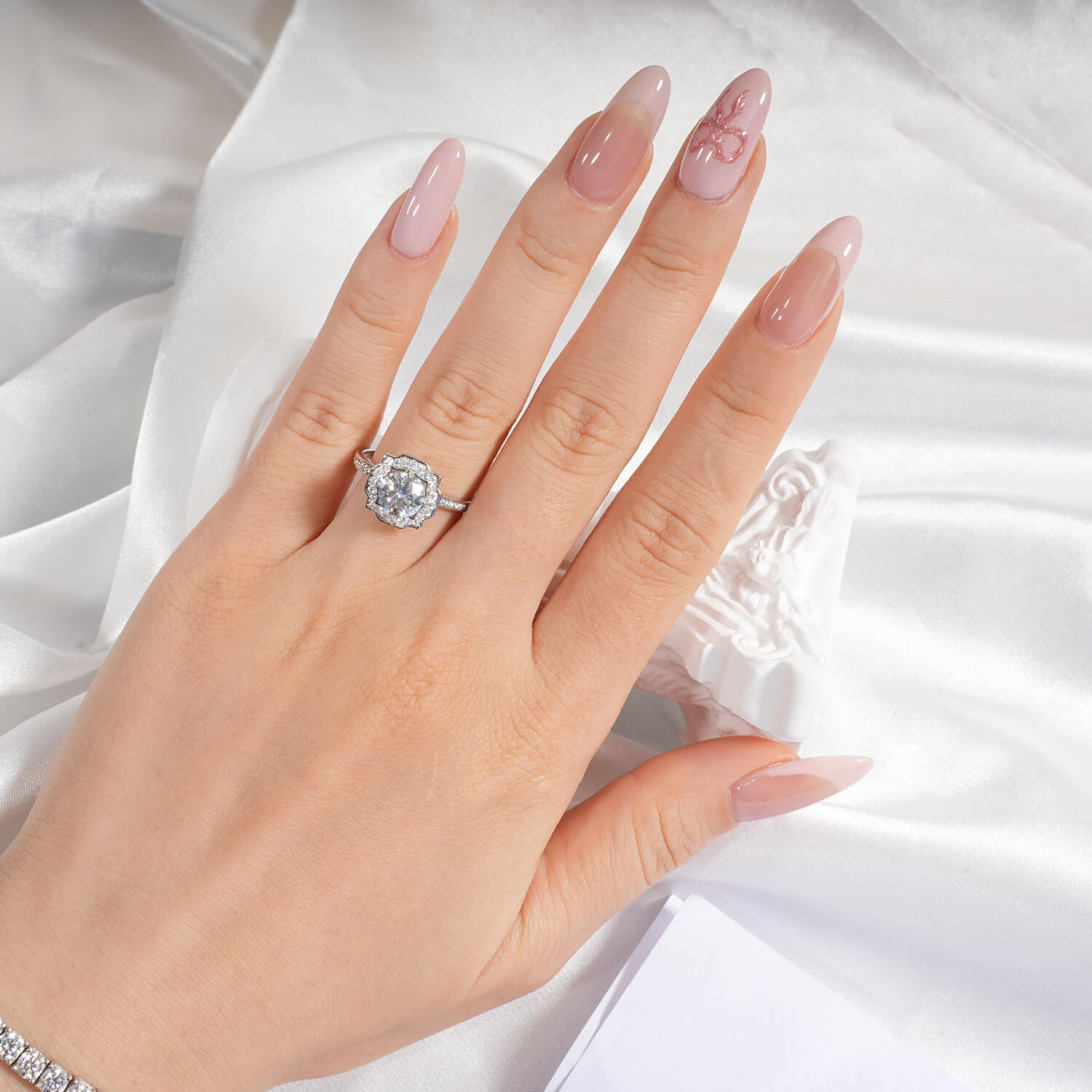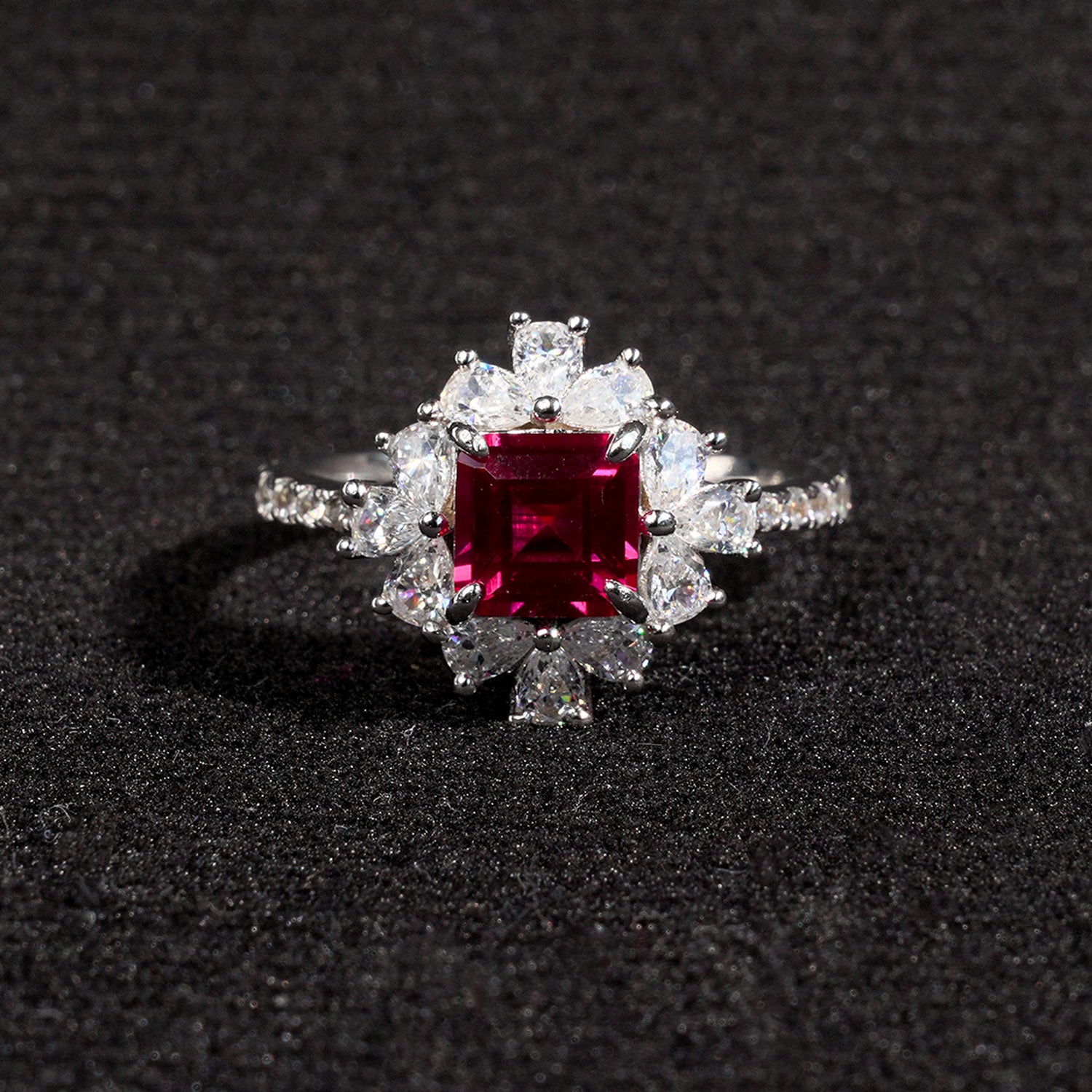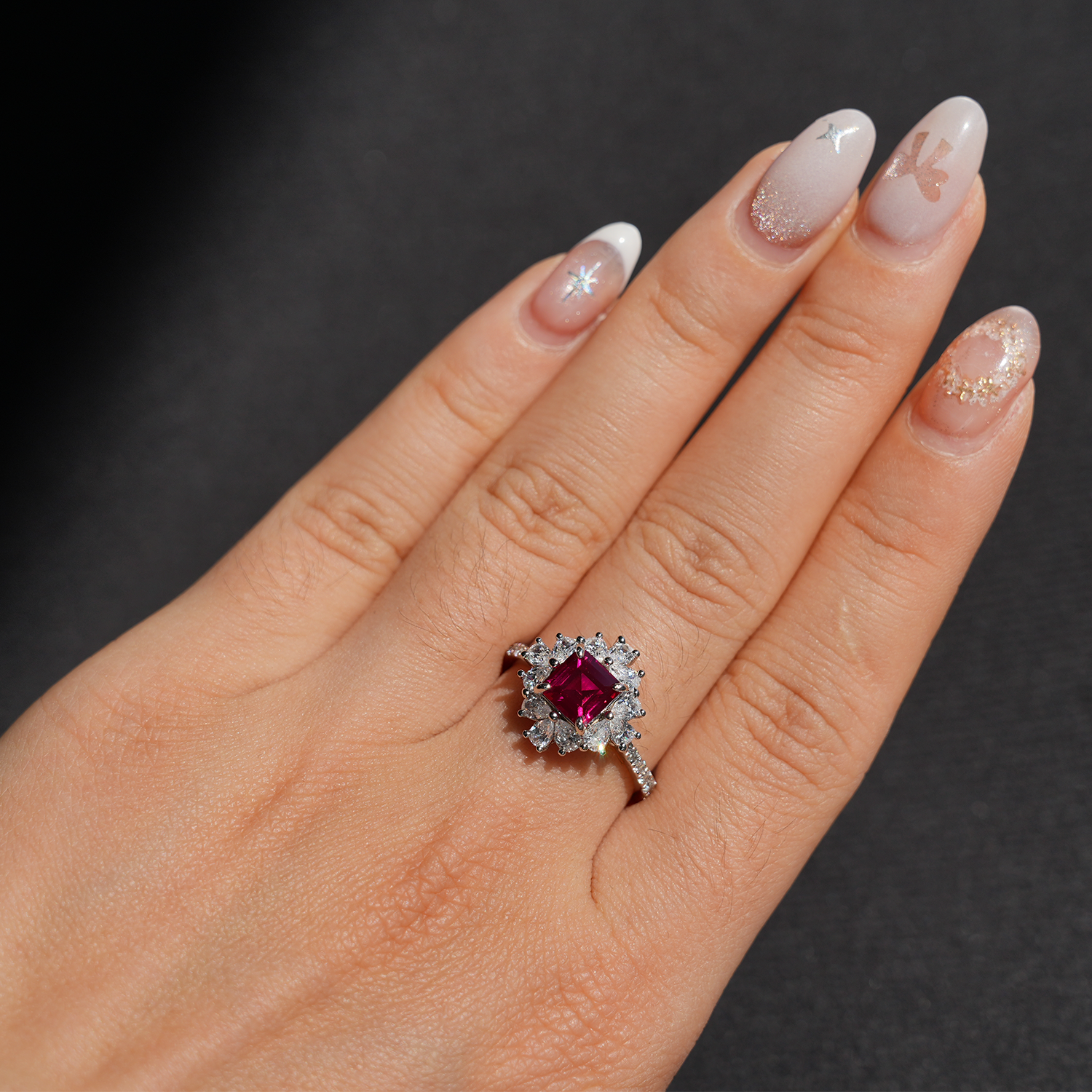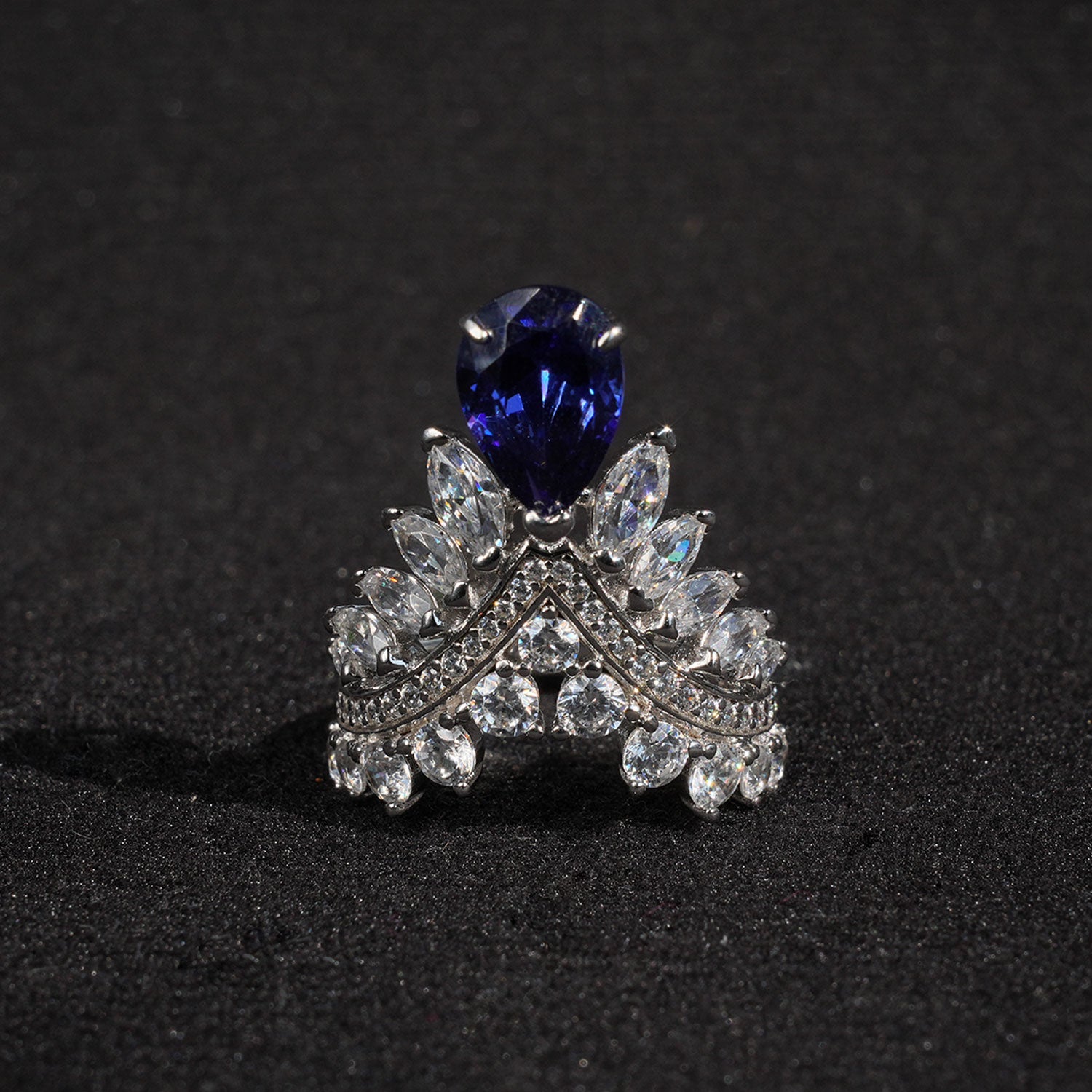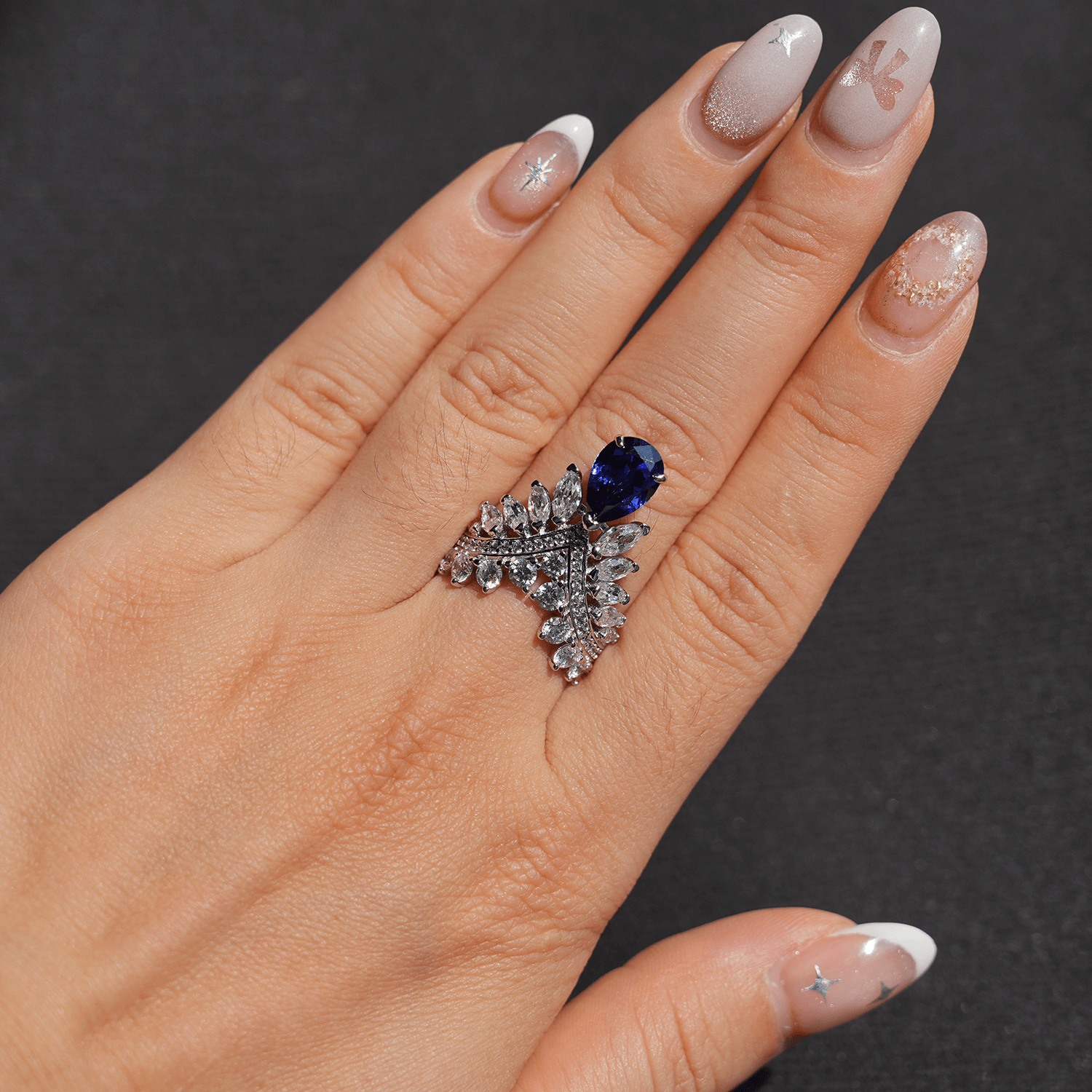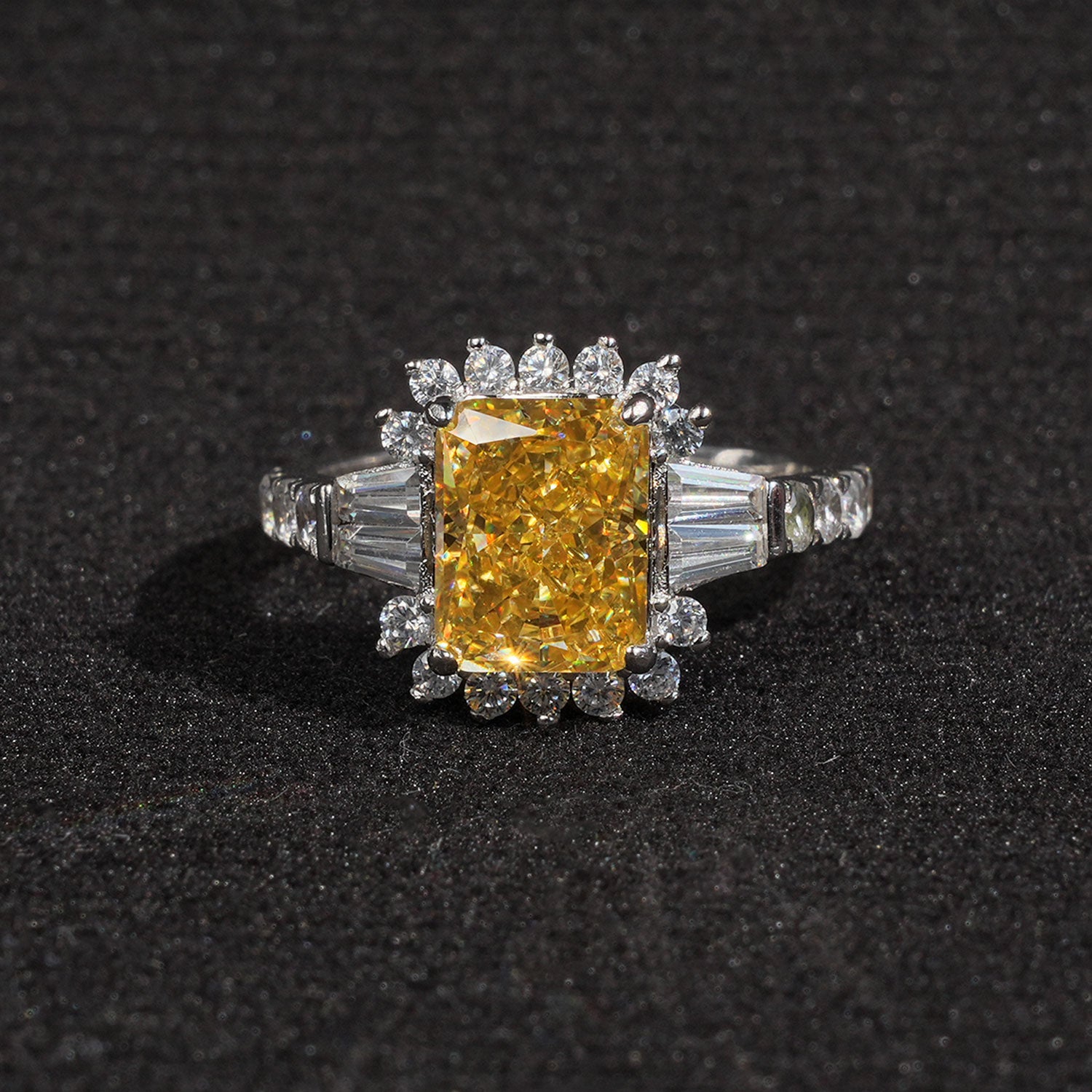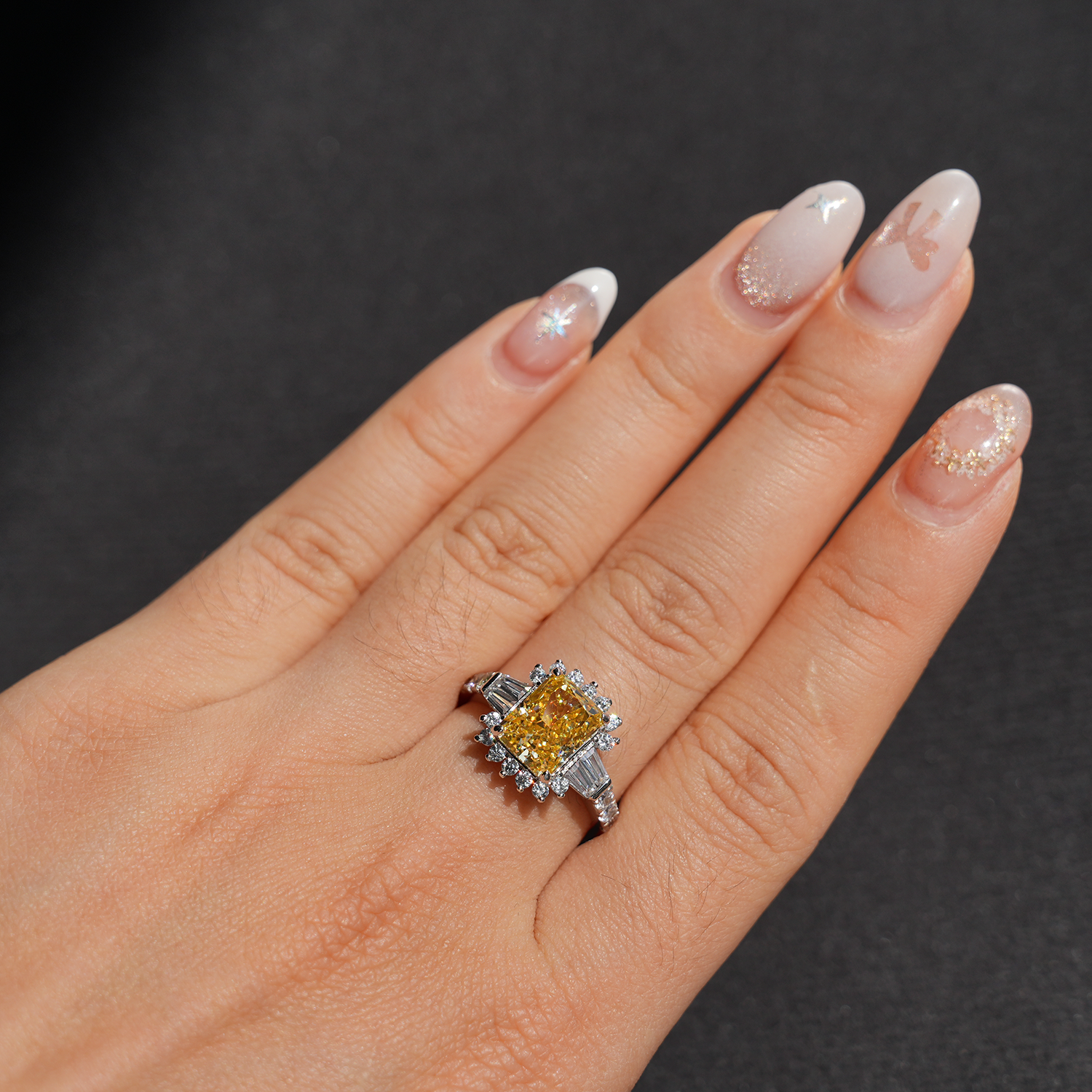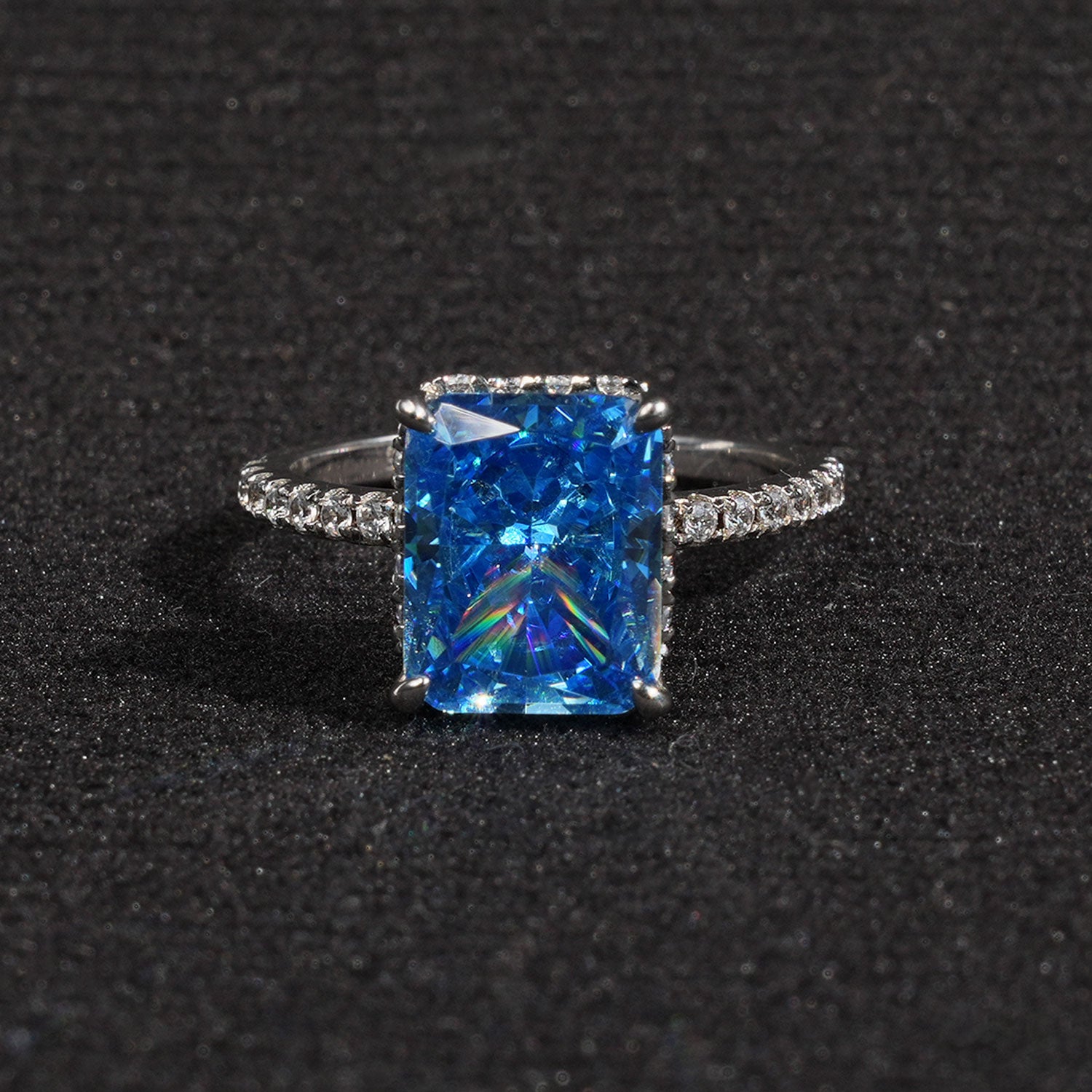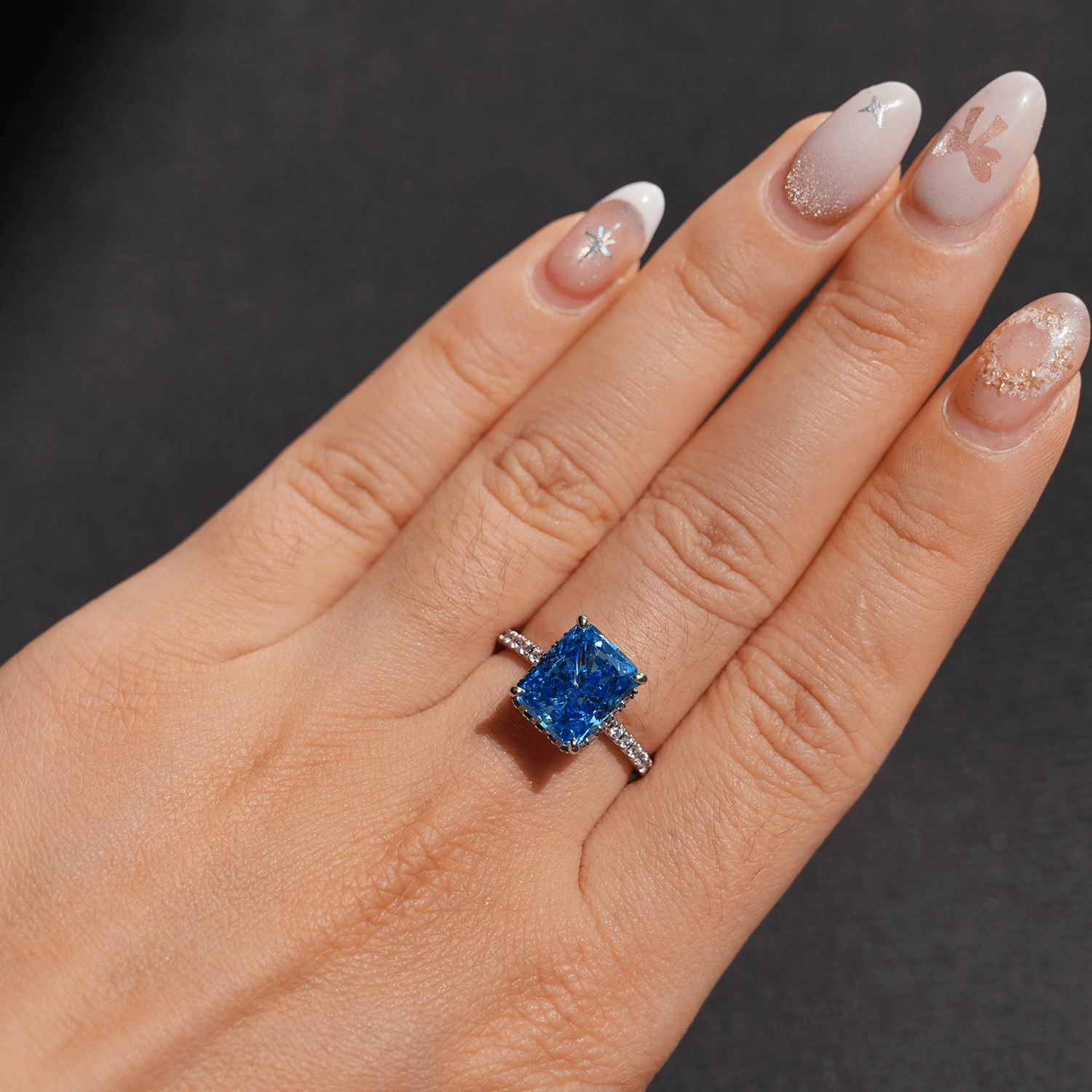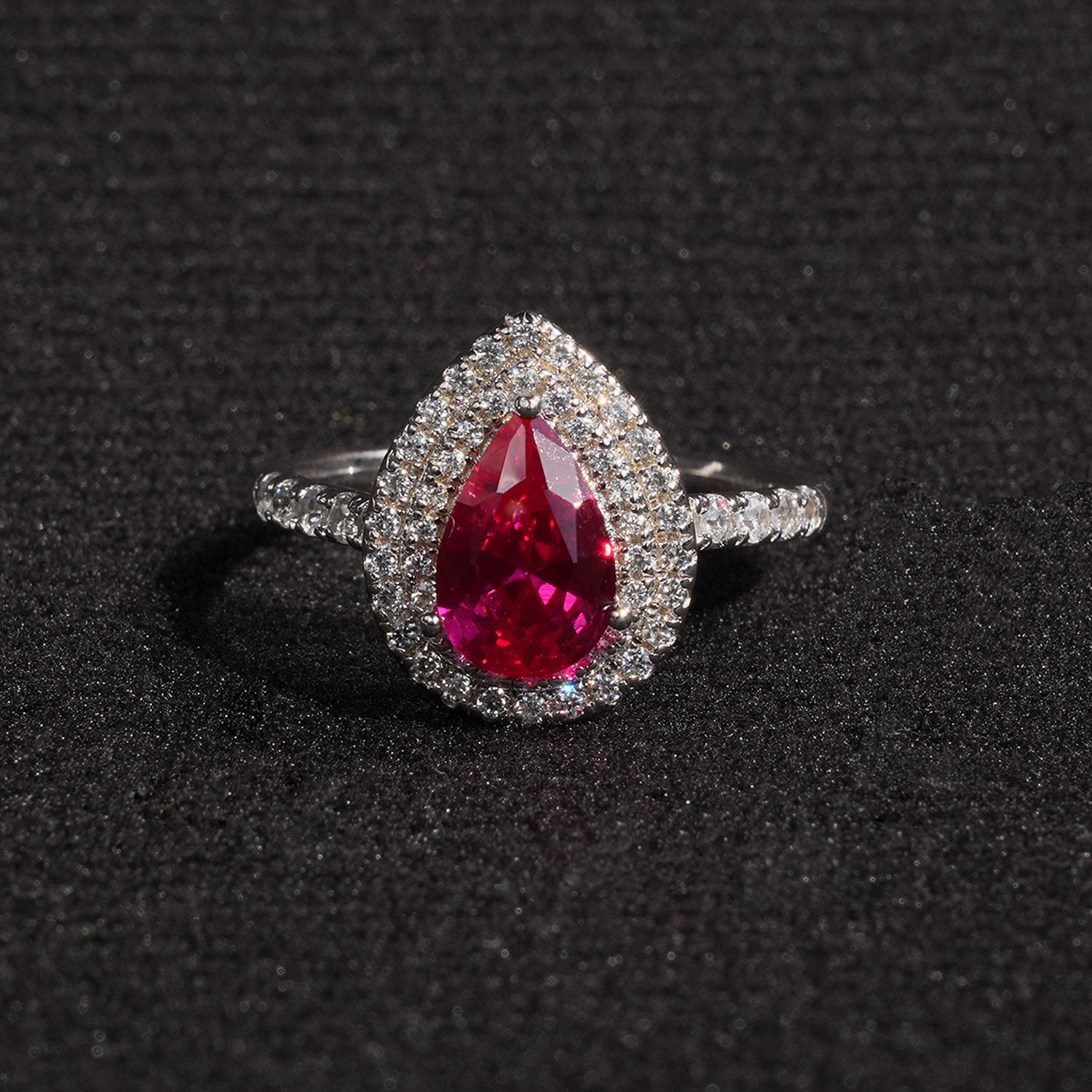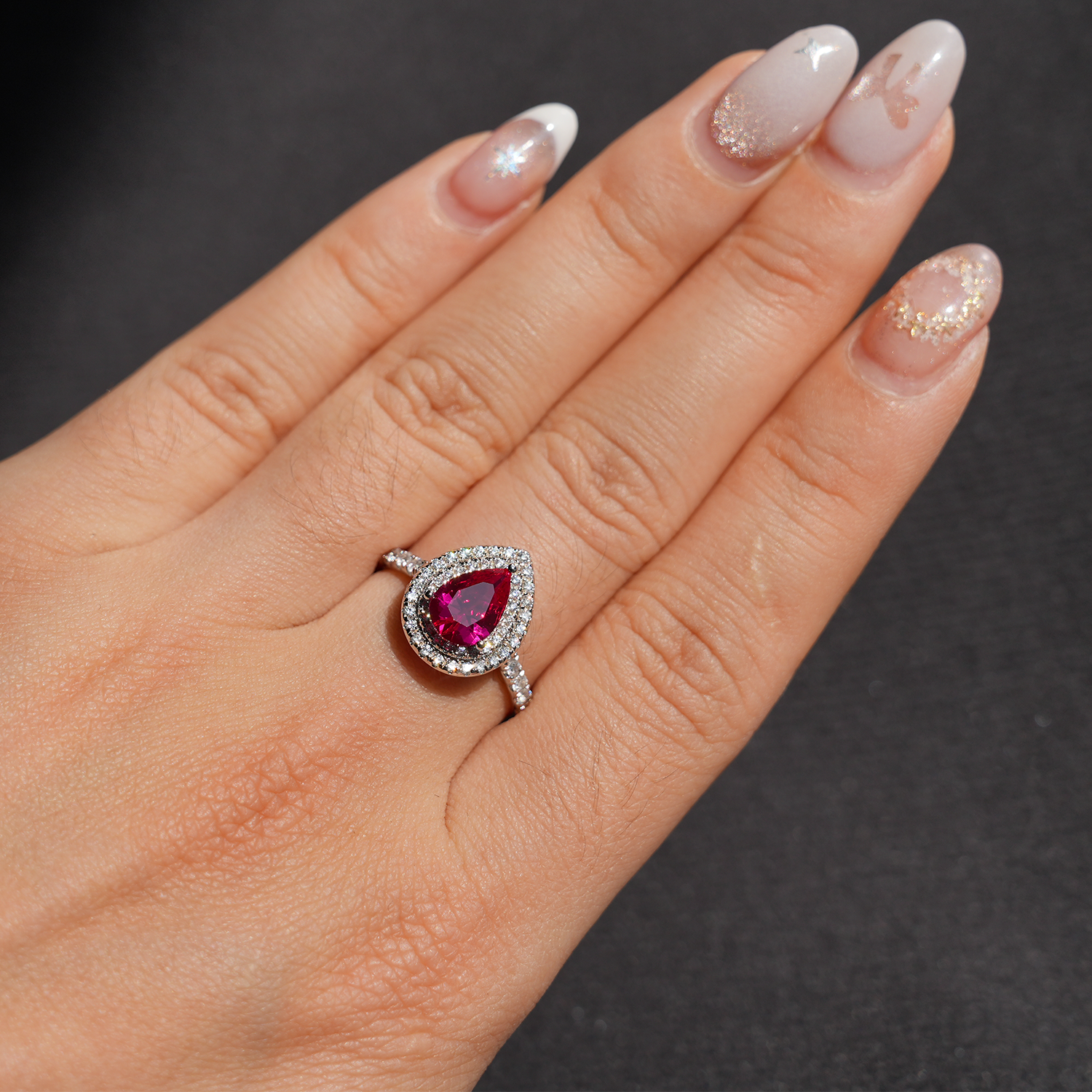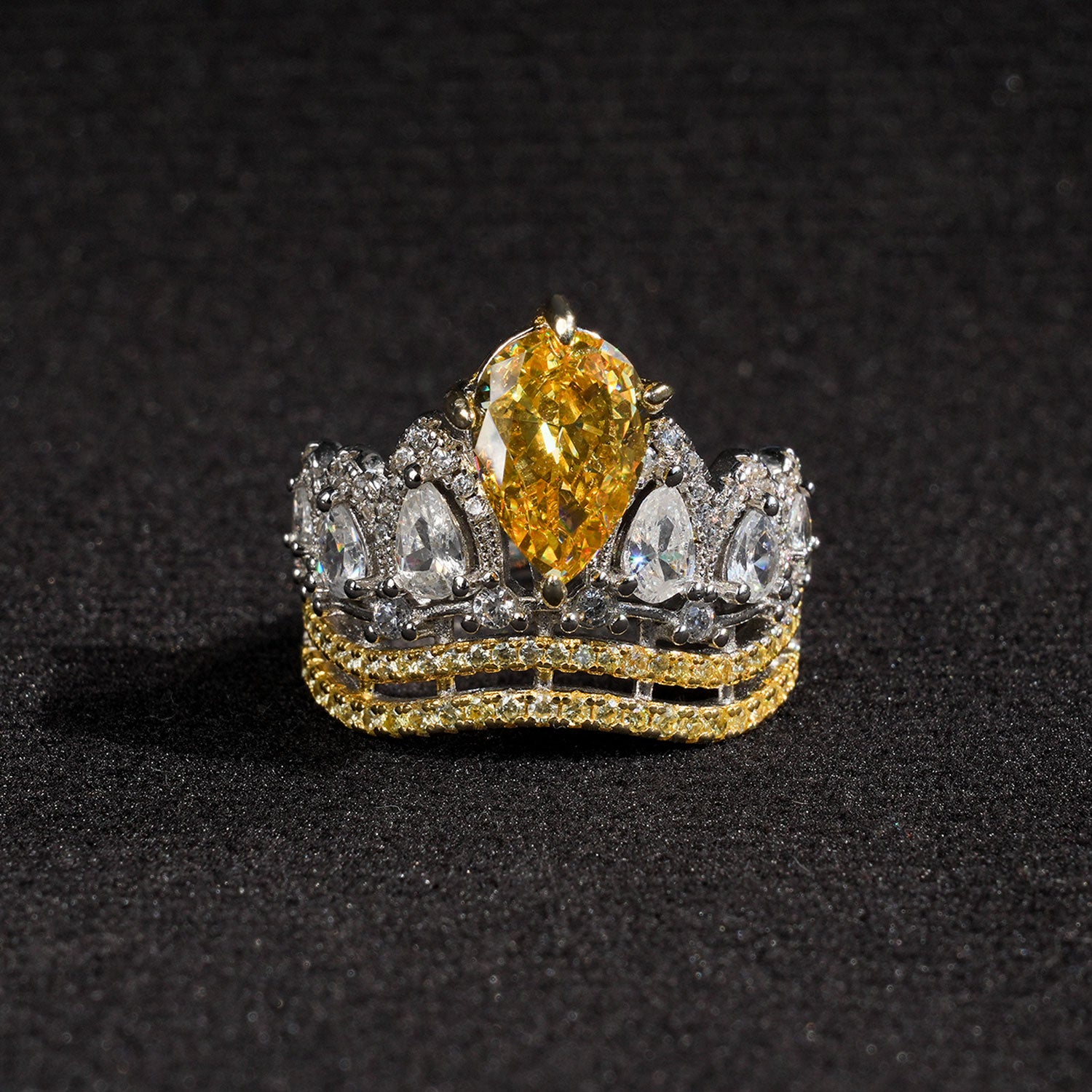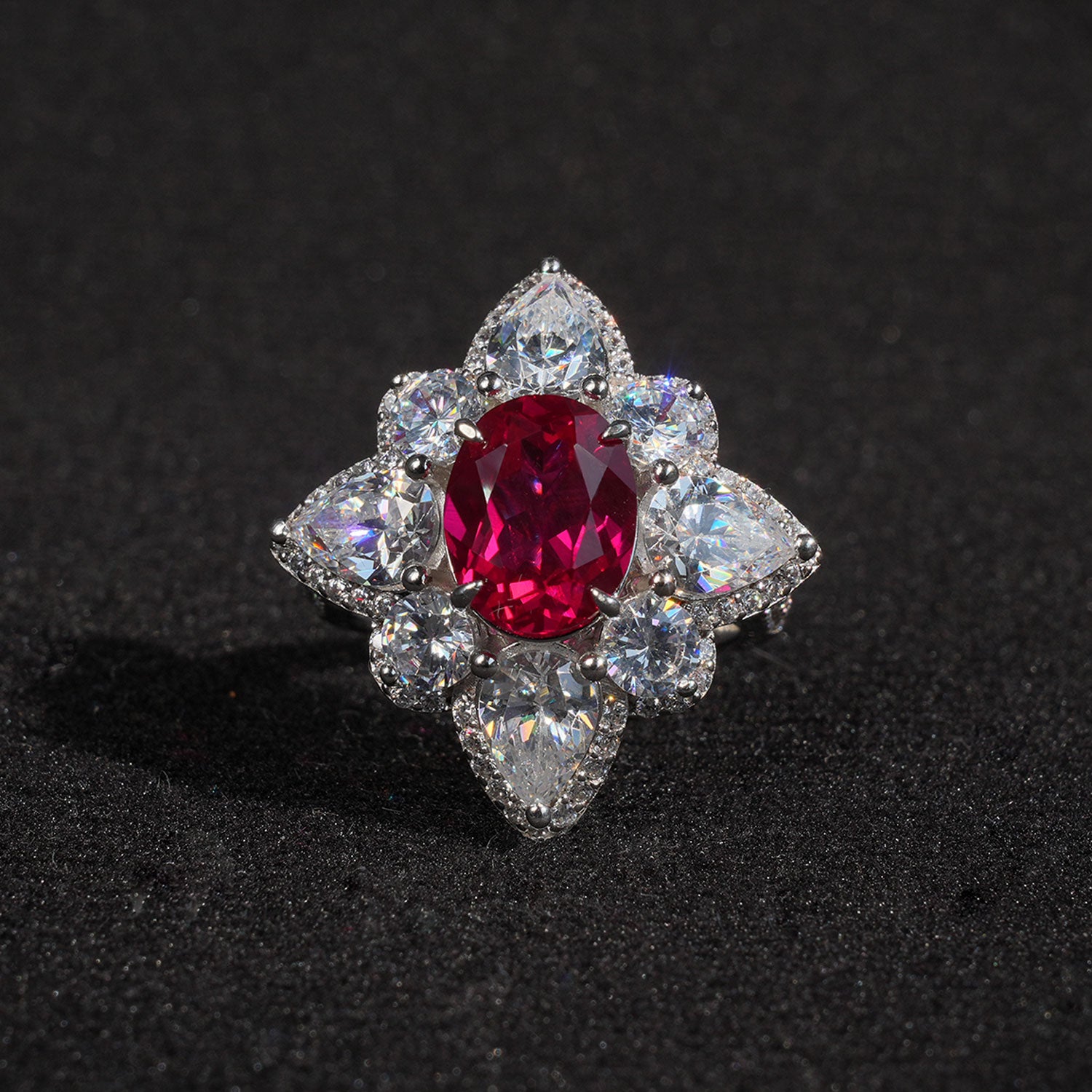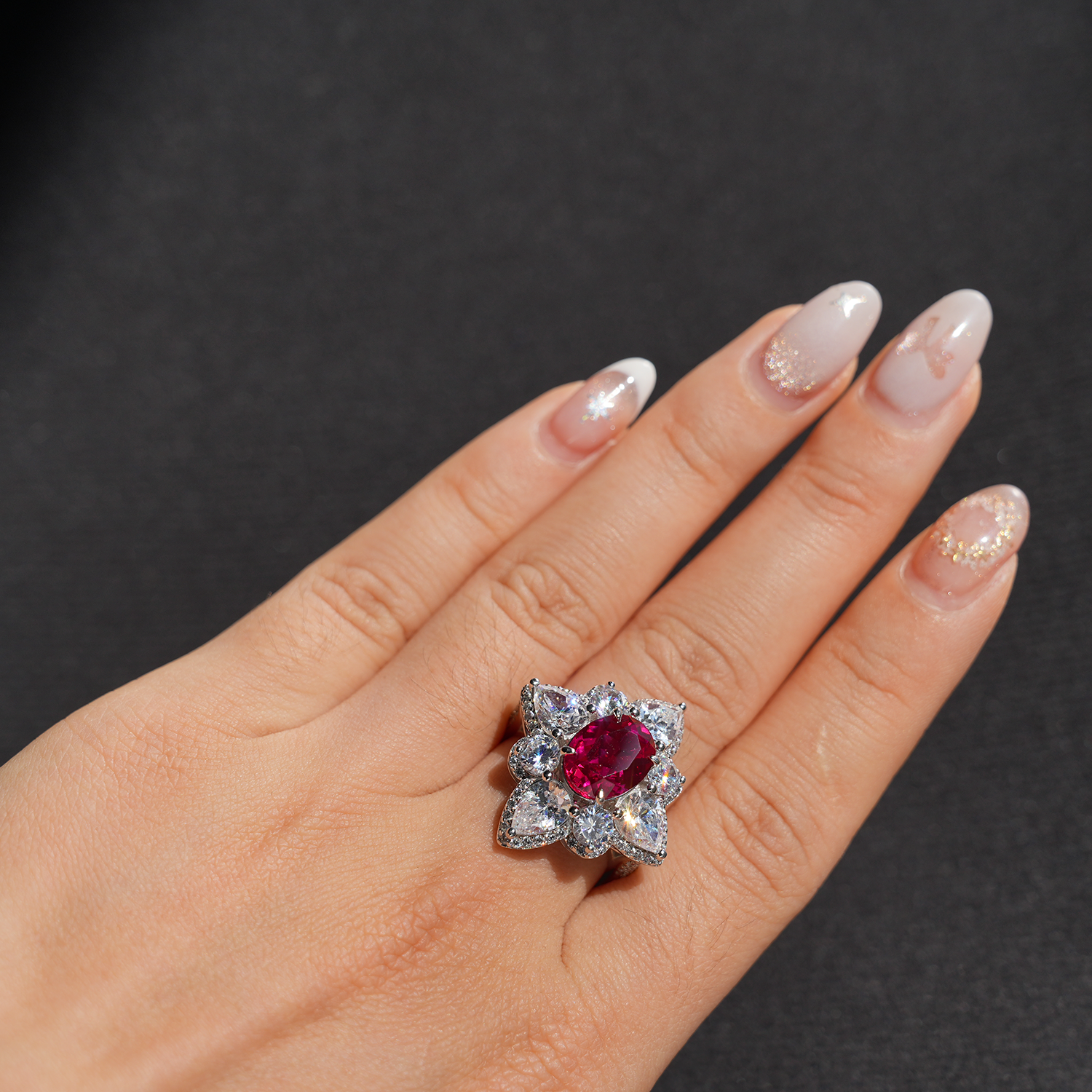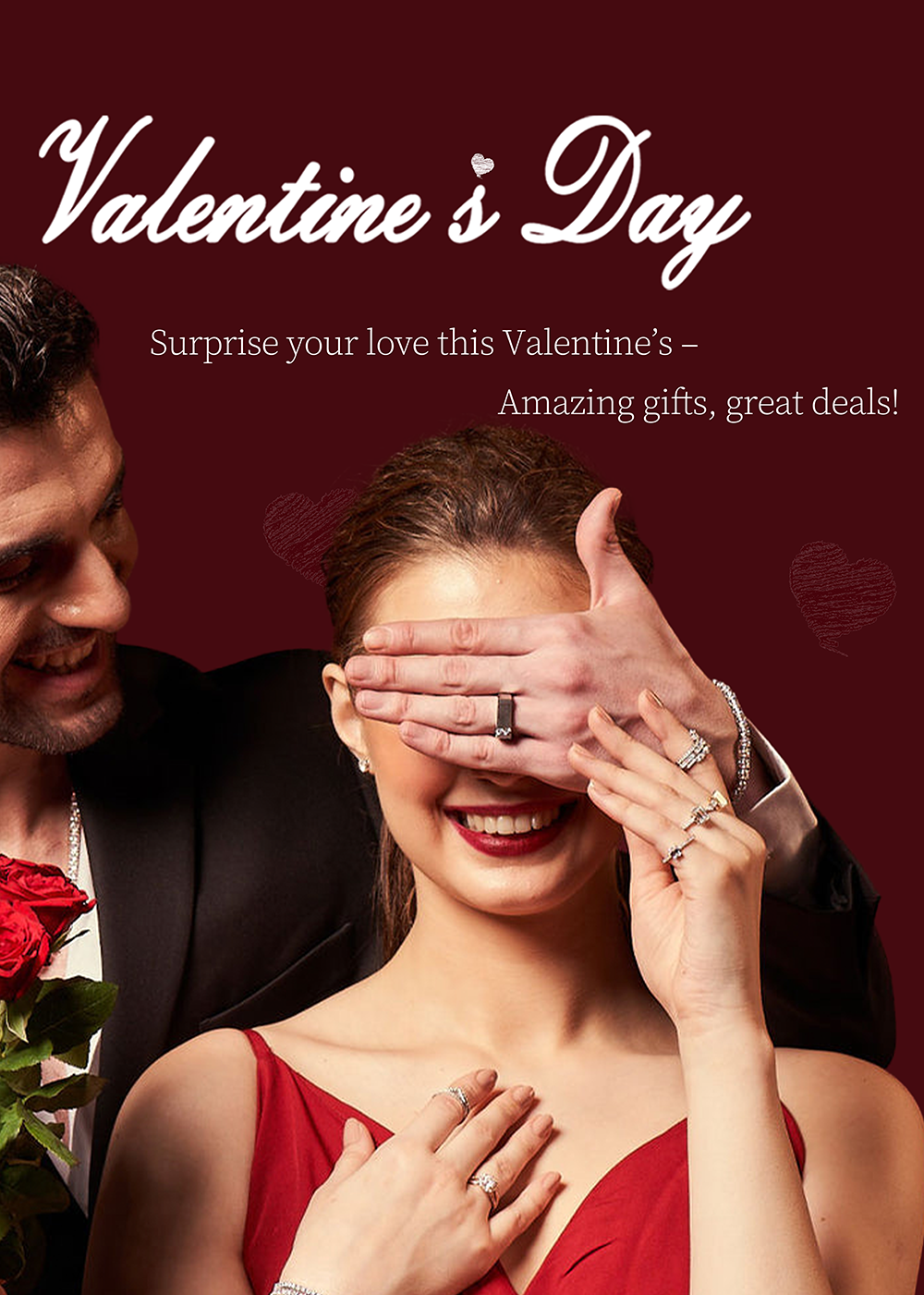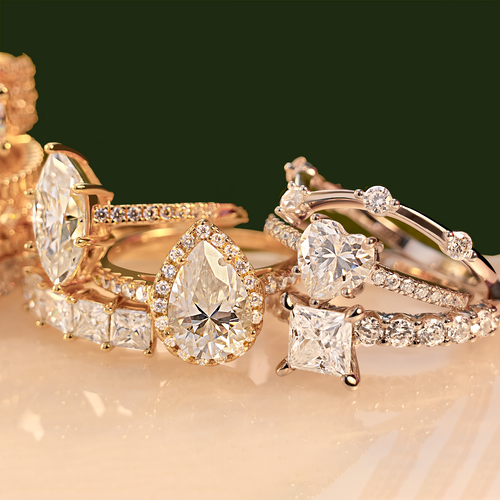If you’re drawn to the timeless elegance of a prong-set solitaire engagement ring but feel overwhelmed by the choices—four prongs, six prongs, or even eight?—you’re in the right place.Prong settings are a classic choice for showcasing gemstones, and the right prong style can completely transform the look of your ring. Let’s dive into everything you need to know about prong settings!
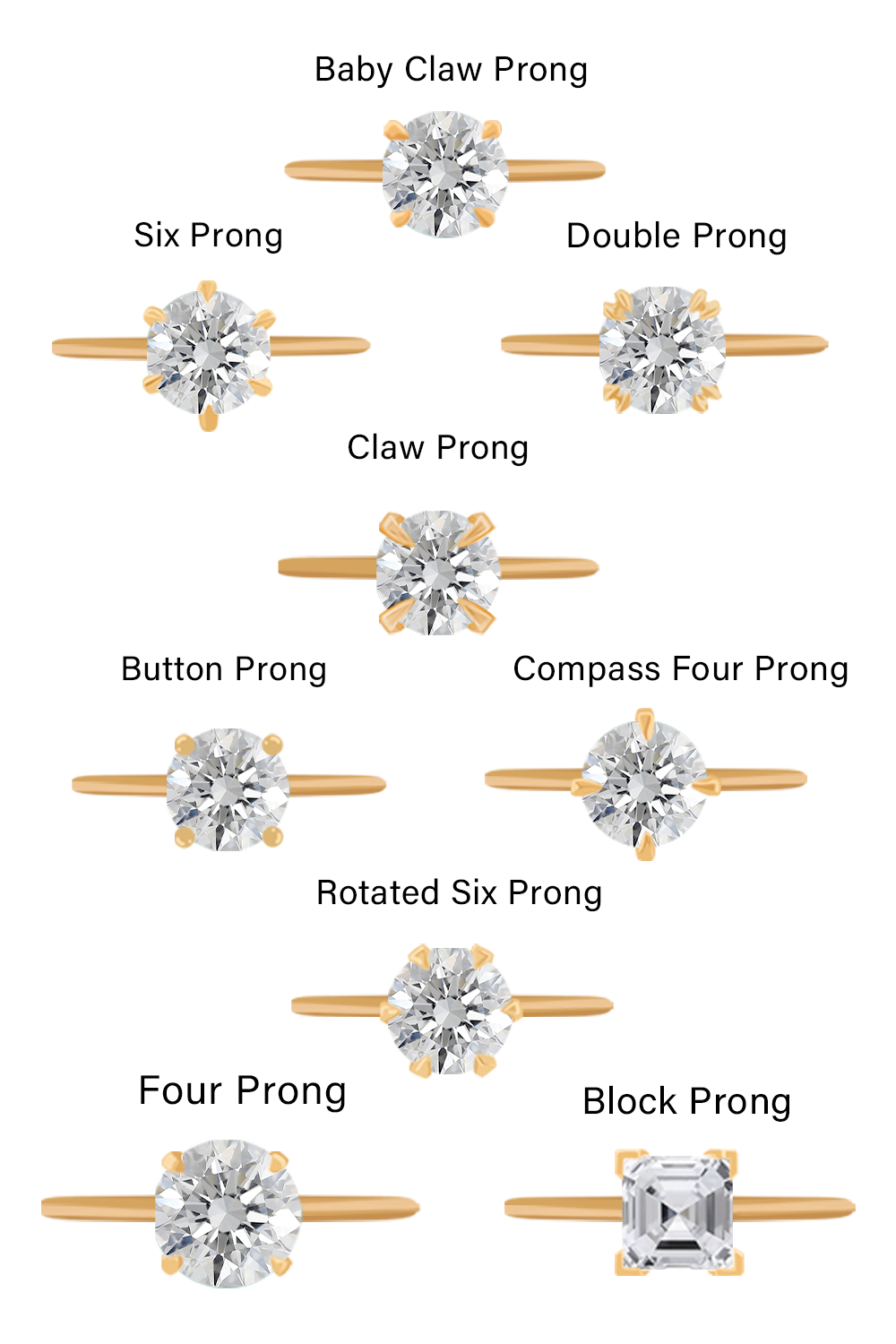
What Are Prongs on a Ring?
Prongs are the small metal tips that hold your diamond or gemstone securely in place. They’re a key feature of prong settings, one of the most popular and versatile setting styles. Other setting types include bezel, tension, and pave, but prong settings remain a favorite for their ability to highlight a stone’s brilliance.
Why Choose a Prong Setting?
- Maximizes Sparkle: Prongs allow more light to enter the stone, enhancing its brilliance and making it appear larger.
- Minimalist Design: The sleek, understated look of prongs keeps the focus on the gemstone.
- Customizable: Prongs come in various shapes, sizes, and orientations to suit your style.
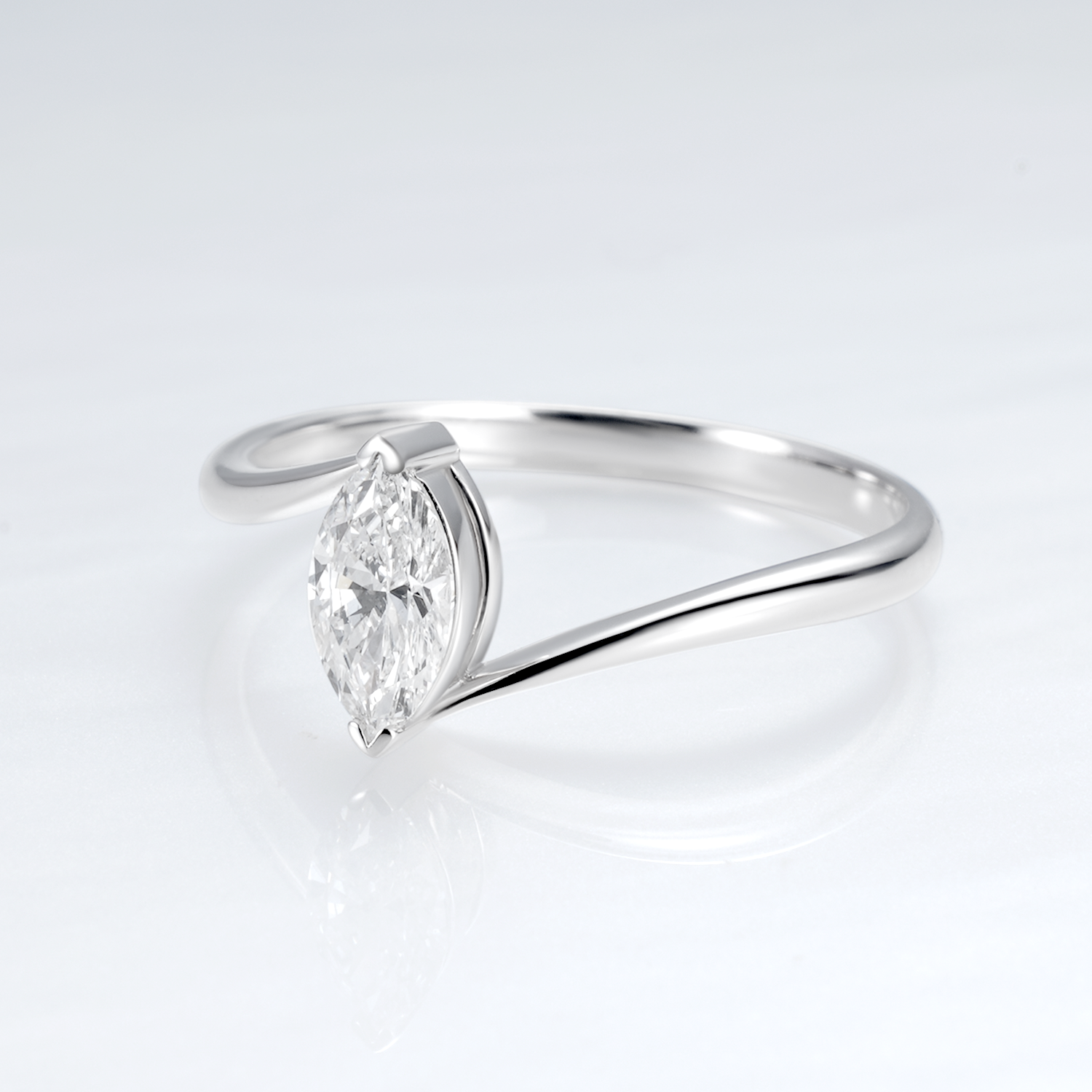
How Are Prong Settings Made?
Prong settings start with metal prongs sticking straight up. Once the gemstone is placed, the prongs are carefully bent over the stone to secure it. Excess metal is trimmed, and the prongs are polished for a snug, secure fit. This process requires precision and skill to ensure the stone is held firmly while maximizing its beauty.
Prong Styles and Their Meanings
Prong settings aren’t just functional—they can also carry symbolic meaning. Some couples choose a specific number of prongs to represent something special, like an anniversary date or cultural significance.
Prong Shapes: Which One is Right for You?
Prongs come in a variety of shapes, each offering a unique aesthetic. Here are the most popular options:
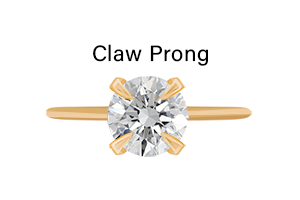
2. Claw Prongs:
- Look: Small, pointed prongs that add a touch of drama without overwhelming the stone.
- Best For: Those who want a balance of security and subtlety.
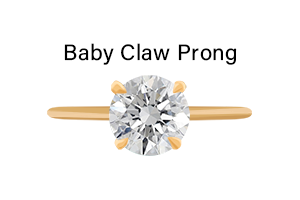
1. Baby Claw Prongs (Petite Claw Prongs):
- Look: Small, pointed prongs that add a touch of drama without overwhelming the stone.
- Best For: Those who want a balance of security and subtlety.
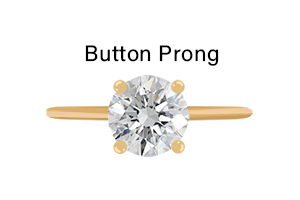

3. Button Prongs:
- Look: Tiny, rounded prongs that let the stone take center stage.
- Best For: Fancy-shaped stones like pears, hearts, or hexagons.
3. Button Prongs:
- Look: Tiny, rounded prongs that let the stone take center stage.
- Best For: Fancy-shaped stones like pears, hearts, or hexagons.
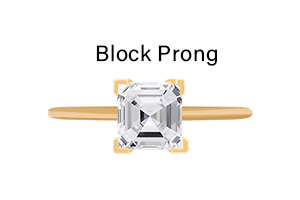
1. Baby Claw Prongs (Petite Claw Prongs):
- Look: Small, pointed prongs that add a touch of drama without overwhelming the stone.
- Best For: Those who want a balance of security and subtlety.

Number of Prongs: 4 vs. 6 vs. 8
The number of prongs you choose can impact both the security and appearance of your ring.
1. Four-Prong Setting:
- Pros: Shows more of the stone, creates a square illusion (great for round or square stones), and is low-maintenance.
- Cons: Slightly less secure than six prongs.
2. Six-Prong Setting:
- Pros: Offers extra security and makes round stones appear more circular.
- Cons: Covers more of the stone and requires more thorough cleaning.
3. Eight-Prong Setting:
- Pros:Ultra-secure and visually unique.
- Cons: Covers a significant portion of the stone, reducing its sparkle.
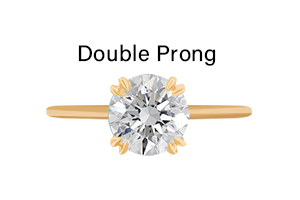
Prong Orientation: Customizing Your Look
The placement of prongs can also be customized for a unique aesthetic:
- Compass Four-Prong Setting: Prongs are positioned north, south, east, and west for a distinctive look.
- Rotated Six-Prong Setting: Middle prongs align with the band for a subtle twist on the classic style.
To keep your prong-set ring looking its best:
Prong Setting Care Tips
1. Clean Regularly: Use warm water, mild soap, and a soft toothbrush to clean under the prongs.
2. Inspect Often: Have your ring checked by a jeweler every 6-12 months to ensure the prongs are secure.
3. Handle with Care: Avoid wearing your ring during heavy activities or while sleeping to prevent damage.
Which Prong Setting is Best?
The best prong setting depends on your stone’s size, shape, and your personal style. For maximum sparkle and minimal coverage, opt for fewer prongs (like four). For added security and a classic look, six prongs are ideal.
Final Thoughts
Prong settings are a timeless choice for engagement rings, offering a perfect blend of beauty and functionality. Whether you prefer the sleekness of claw prongs or the security of a six-prong setting, the right prong style will make your gemstone shine brighter than ever.
Ready to find your perfect prong-set ring? Consult with a trusted jeweler to explore your options and create a piece that’s uniquely yours.
